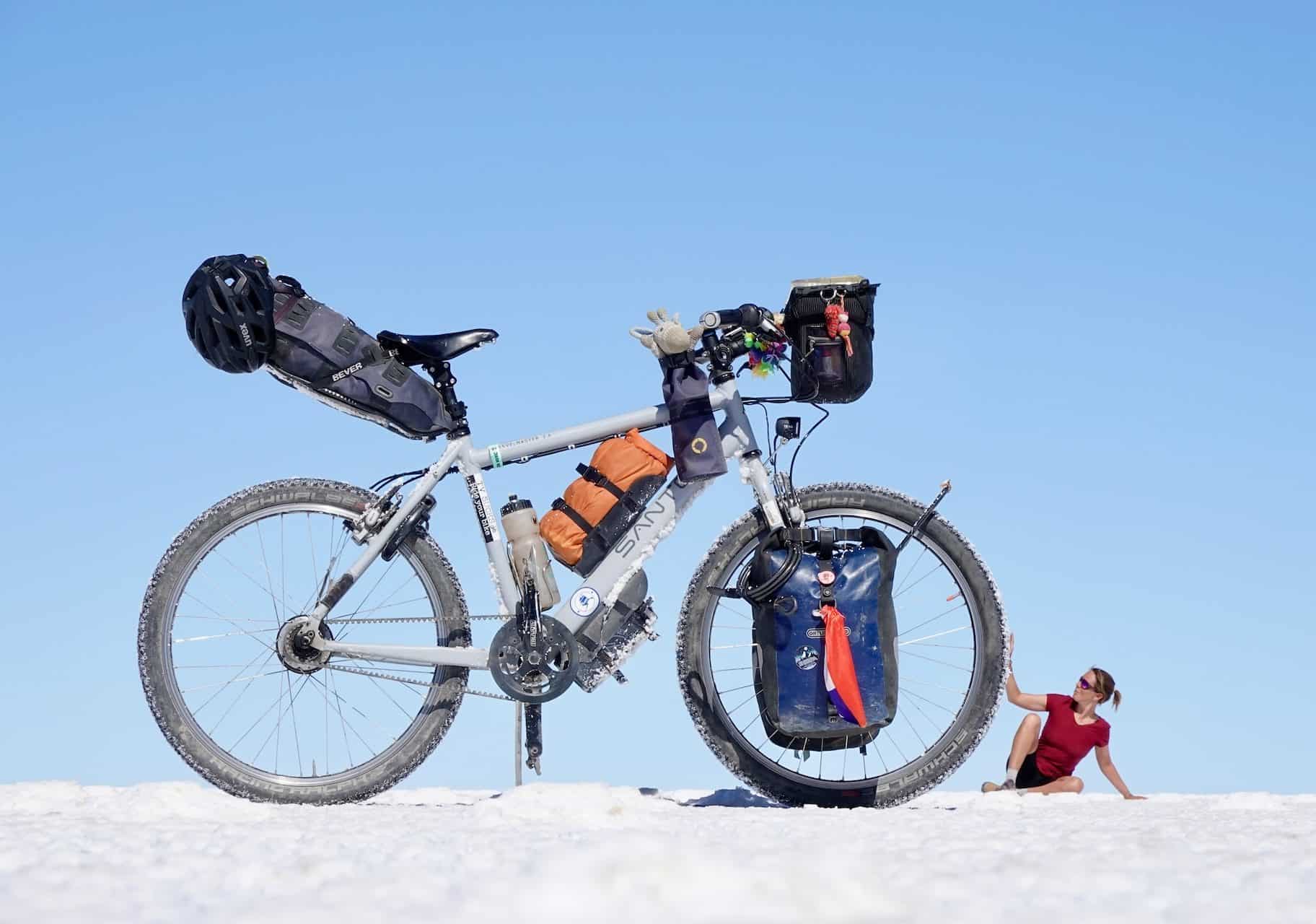
BIG adventures on
the worlds BIGGEST salt flat
After two weeks of cleaning, sanding, painting and filling in exchange for food and shelter, we leave our WorkAway. We are really looking forward to getting on our bikes again. We start with the 20km to Sucre. A climb, but nothing compared to the climb that still awaits us in the city. Paul navigates through the busy city and chooses the smaller, quieter roads as much as possible. And so we finally struggle, zigzagging, over a very quiet road with a gradient of more than 20% to the road that will lead us out of Sucre. We are happy when we take a moment to look back at the city during the descent. It is beautiful right where it is. We’re heading back into the country!
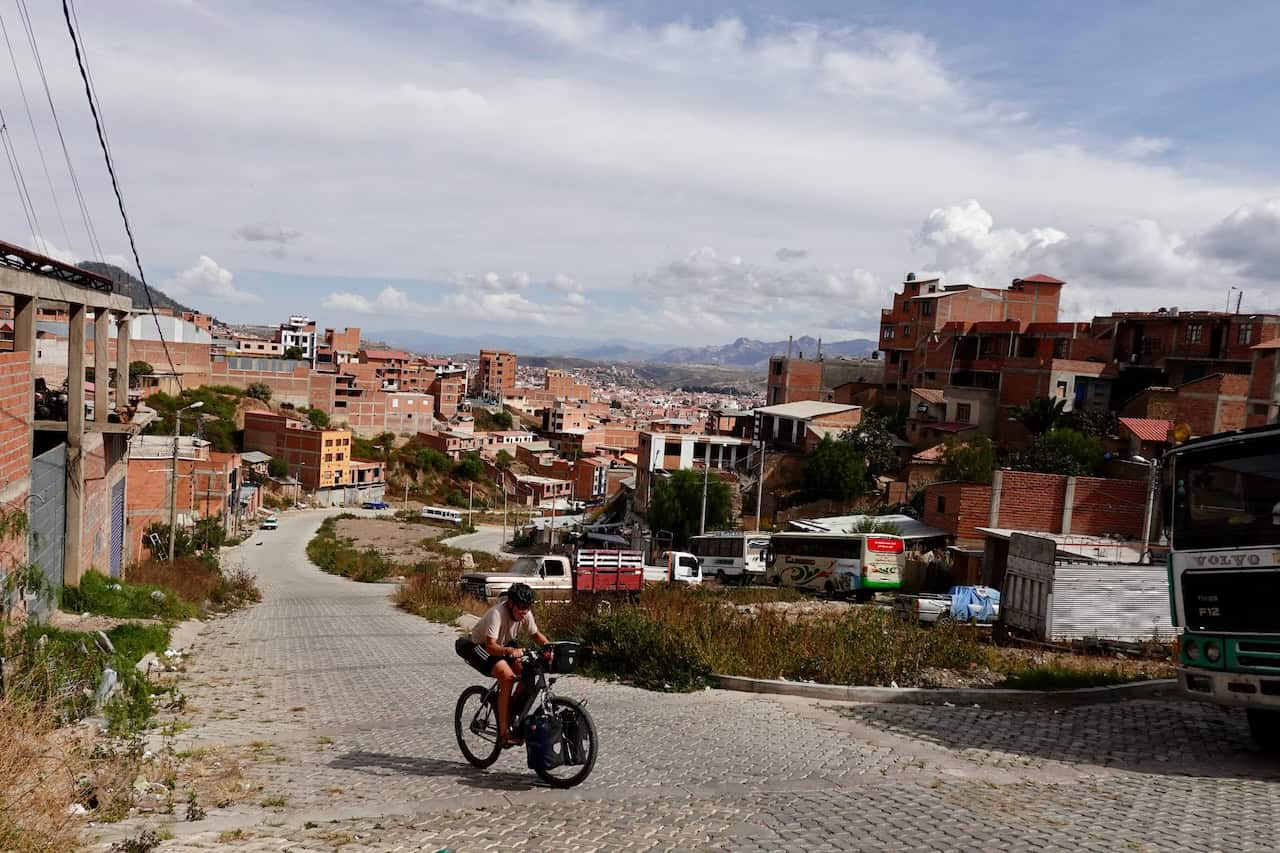
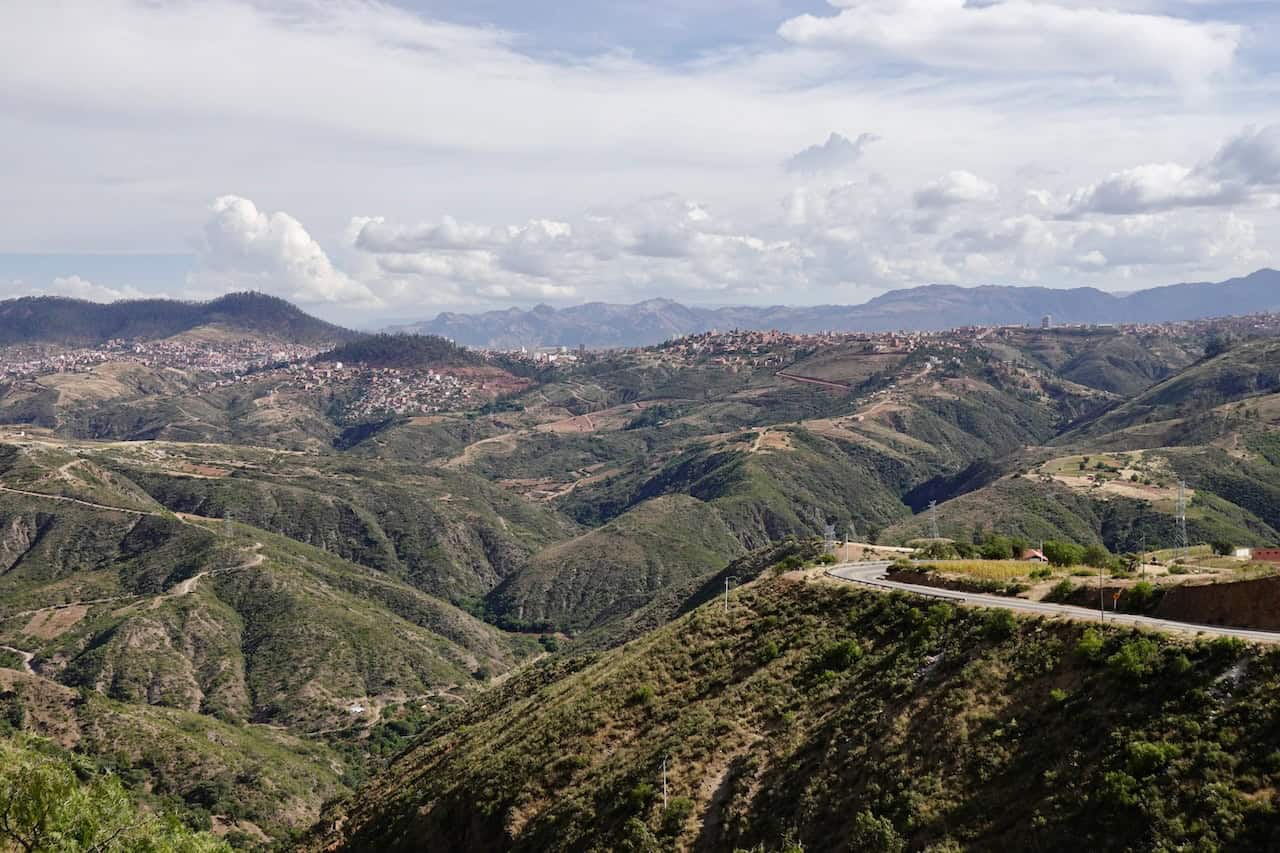
WOW! The cycling after two weeks of ‘rest’ is harder than we thought. We ride 65km, much of which is downhill, but we are both at the end of our rope when we pitch our tent at the Rio Chico at the end of the afternoon. After two weeks of hot showers, we quite enjoy washing ourselves again in the cold river water and under the water bag. Day two is also difficult for us. After 52km, Paul is puffing away next to the road with empty legs. I park my bike and look for a camping spot. To my delight I find a cosy little lawn aside the almost dry riverbed to which I lead Paul. When I cross the path with my bicycle in hand, I soon hear a loud hissing sound. “I HAVE A FLAT!” I shout to Paul. There is sauce in my tire that should seal the puncture, but for now it is bubbling out through the hole. The secret is to keep rolling, so that the sauce can move to the hole, and so I continue walking with my bicycle in hand. Before we even arrived at the field, the hissing had stopped and my tire is still quite hard. What wonderful stuff! Fortunately, we don’t have to patch a tire tonight either.
The third day we ride a lot faster. The magic of the third day after a (too) long rest. Our legs are getting used to their work again! My knee is also starting to turn a little more smoothly after two disappointing days. We leave the ‘Tropical Valley’ with its colorful excesses and drive through an increasingly beautiful environment. When we camp in a dry riverbed (this time of year it is very dry here), two ladies with herds of cows and goats pass our tent. The goat herder doesn’t speak Spanish, only Quechua. She seems to think it’s strange, two white people in a tent on ‘her path’ through the river bed.

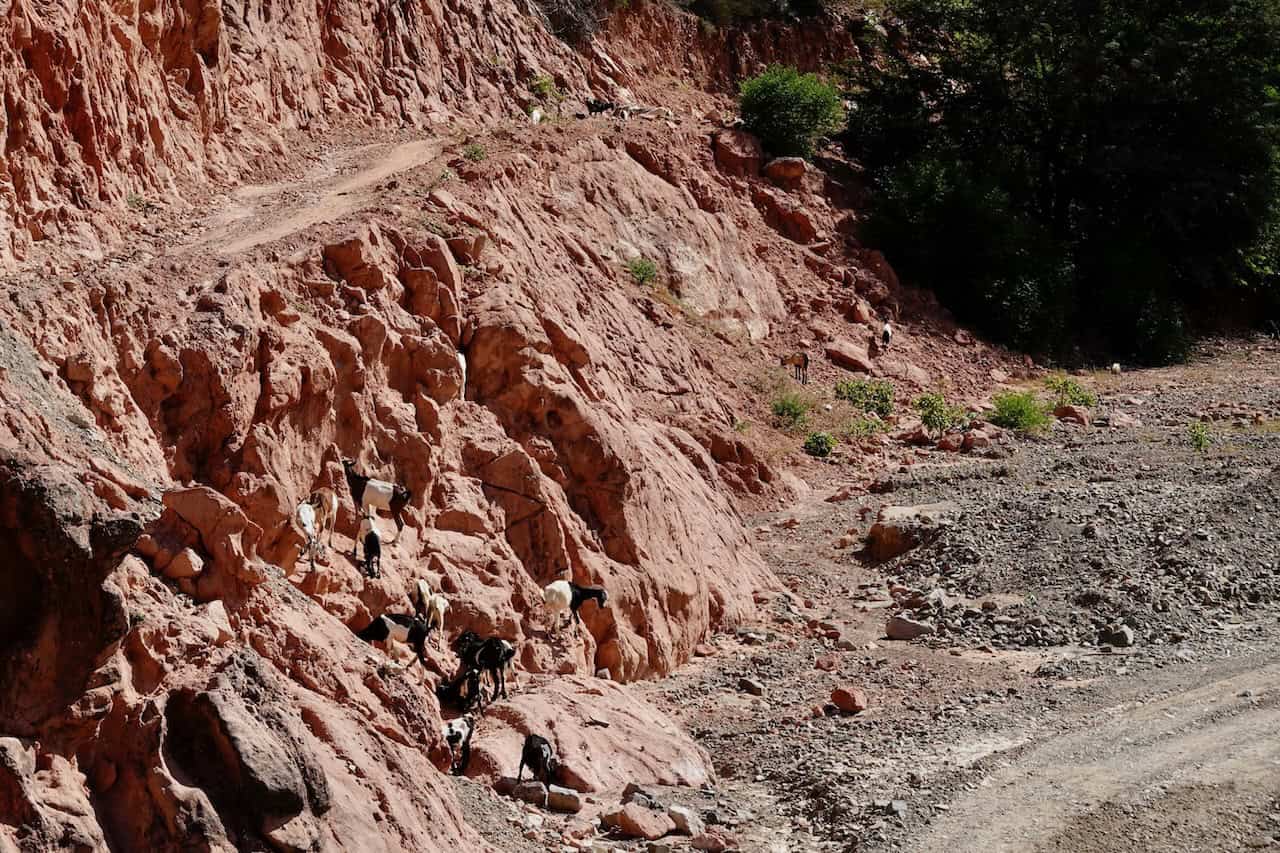


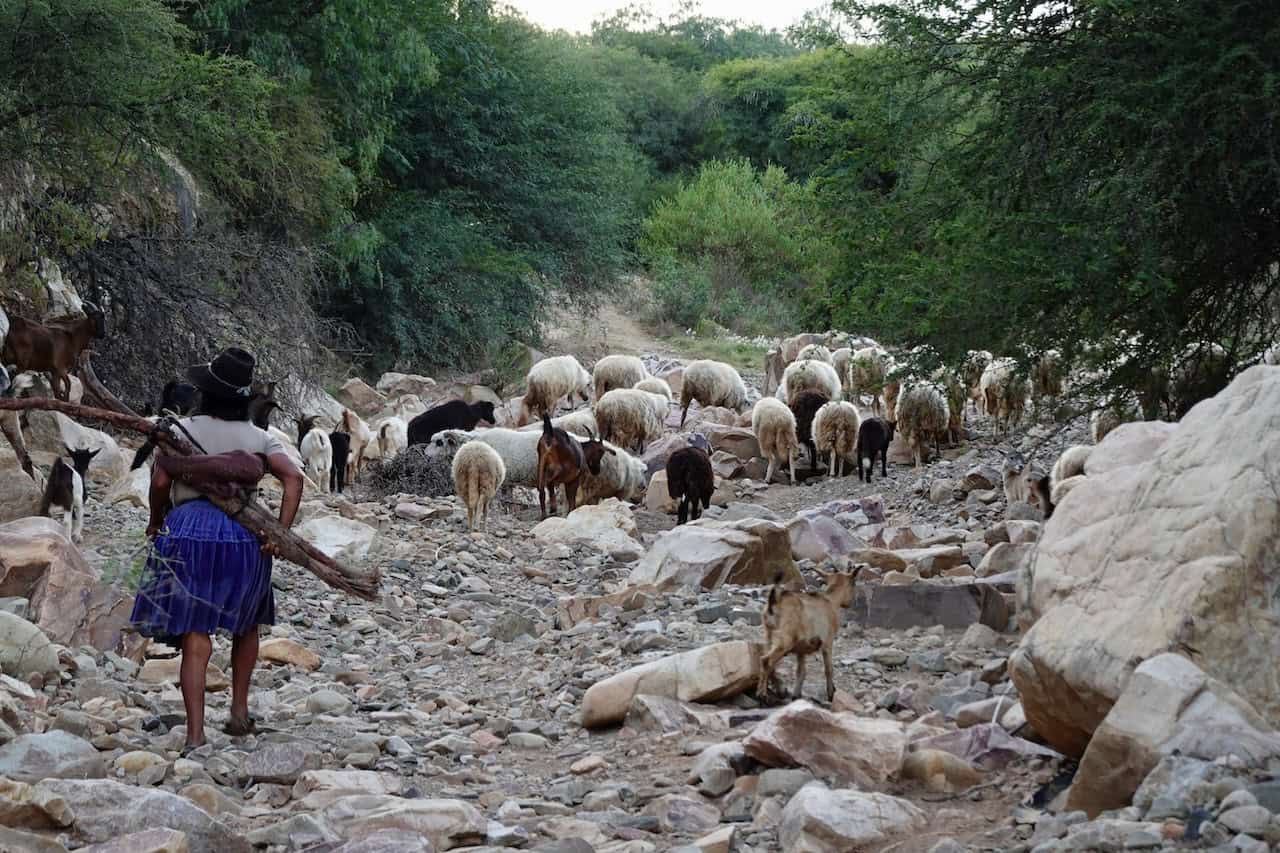
The closer we get to Cochabamba, the more impressive the nature becomes. Even though we cycle on the main road, it feels like we are quite ‘out there’. The road is quiet, not wide and winds up and down mountain slopes. In the villages next to the road there is often less available than we had thought. Fortunately, there is drinking water everywhere, but it is quite a search for an onion or bread. At a tiny kiosk we buy a roll of crackers and cookies to temporarily satisfy our hunger, hoping to find bread again in the next village.



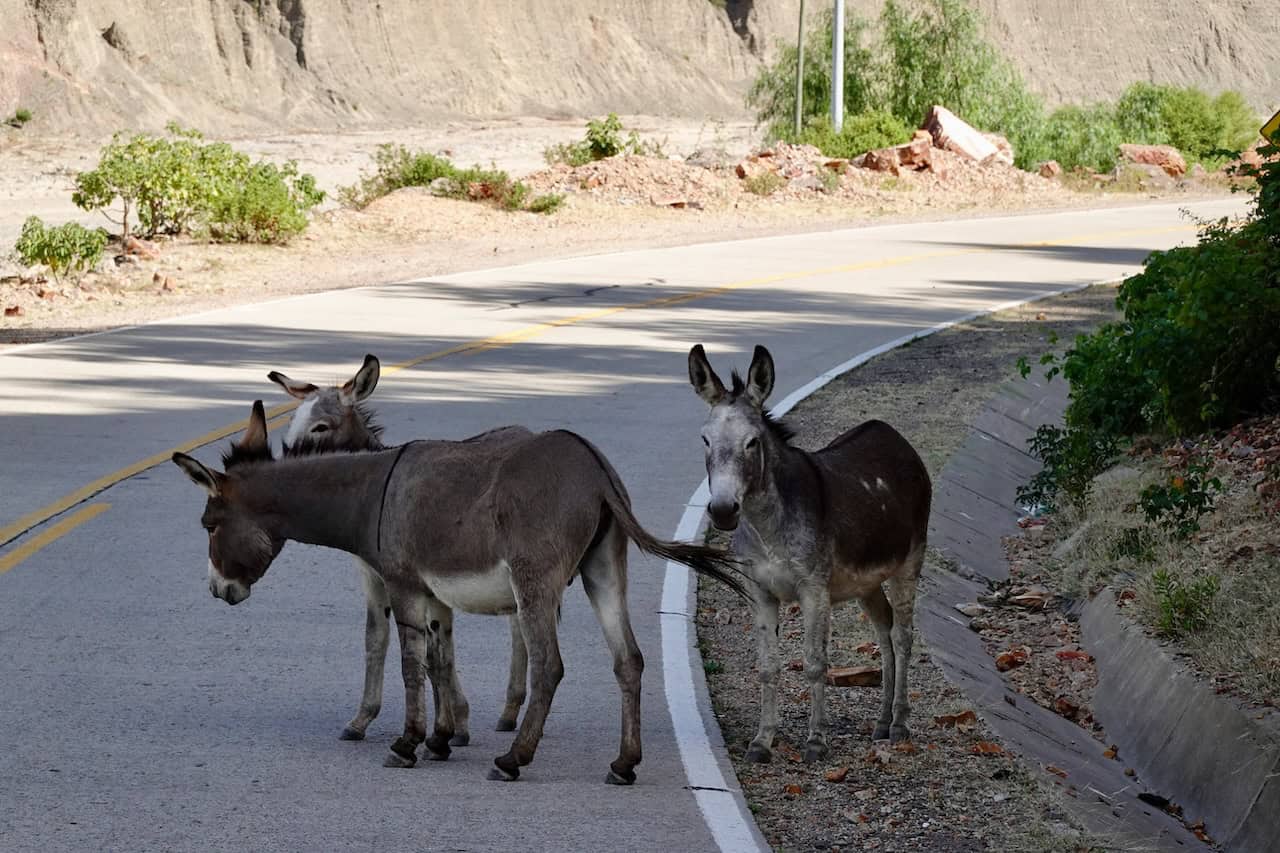

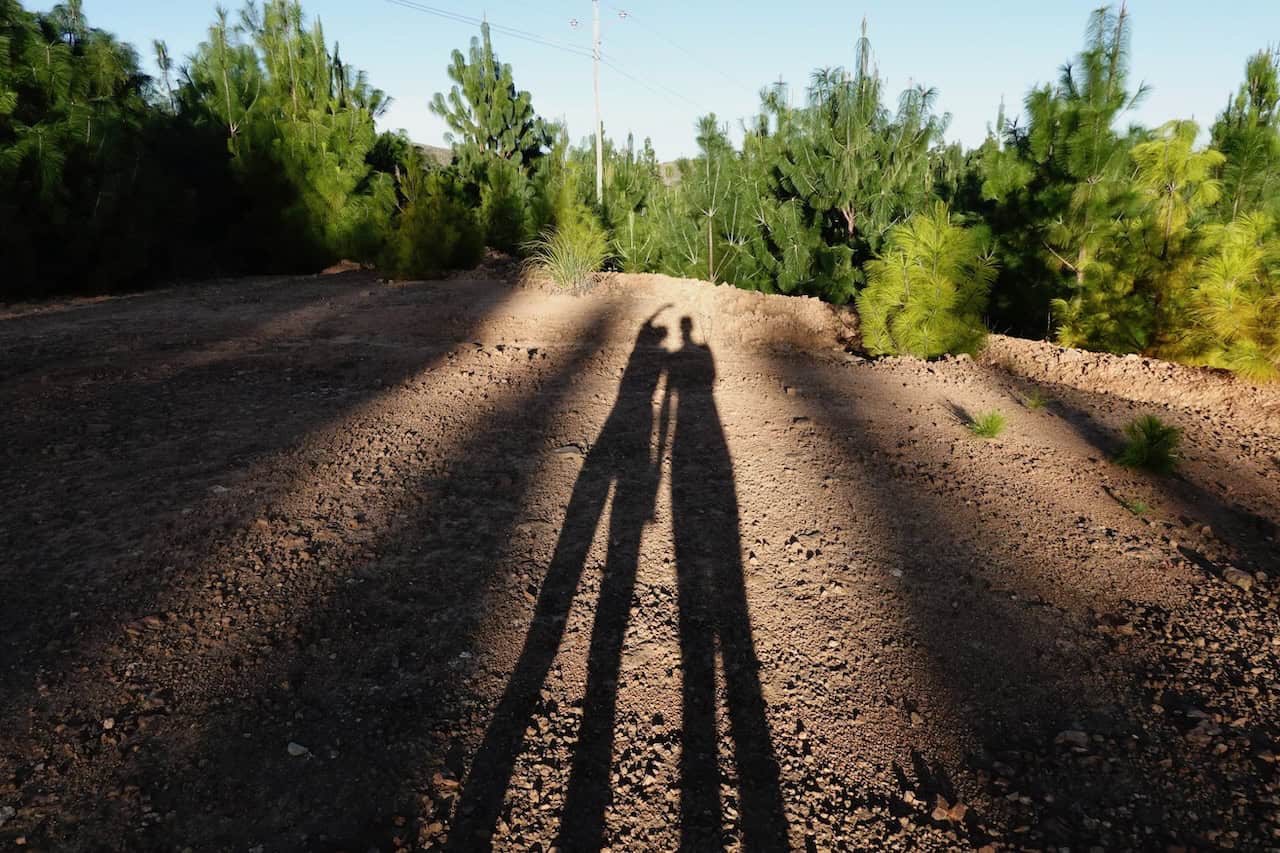
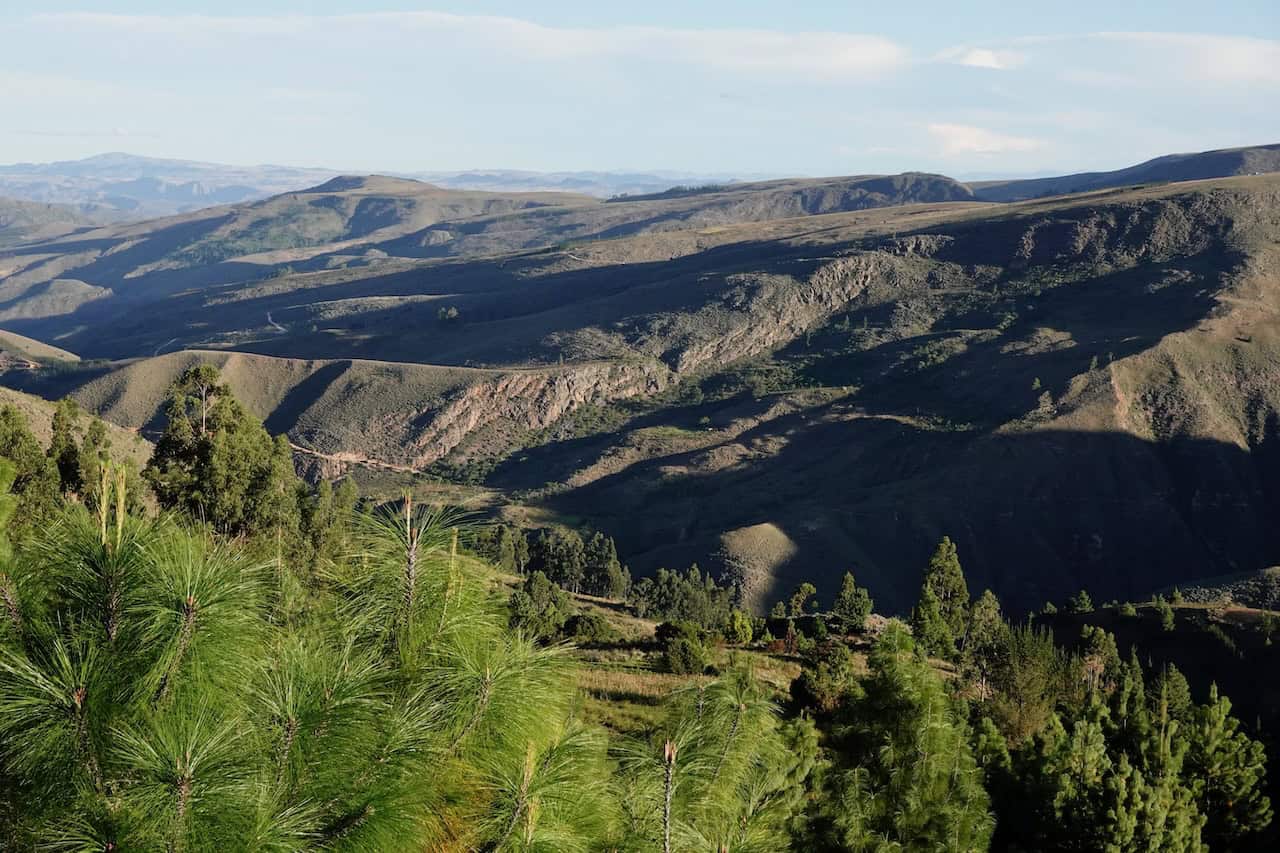
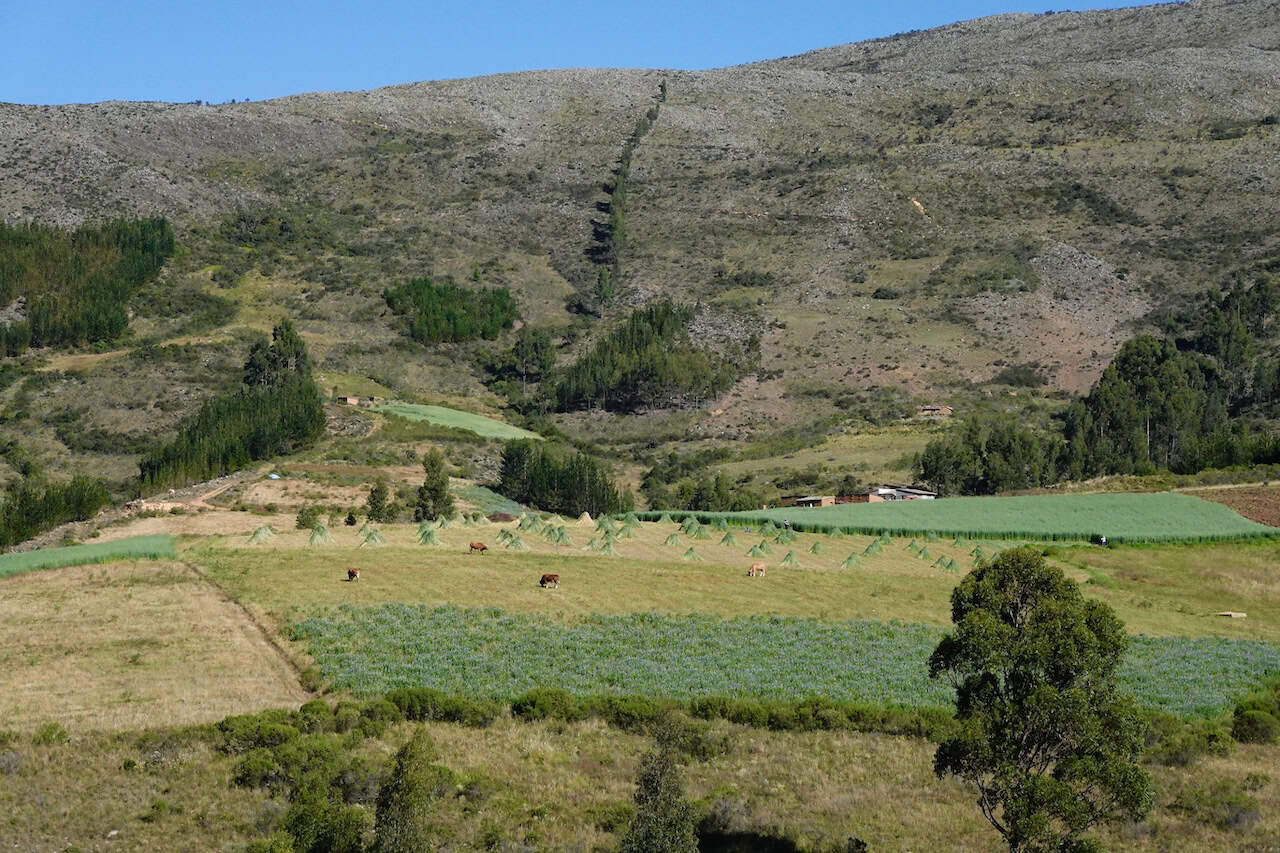

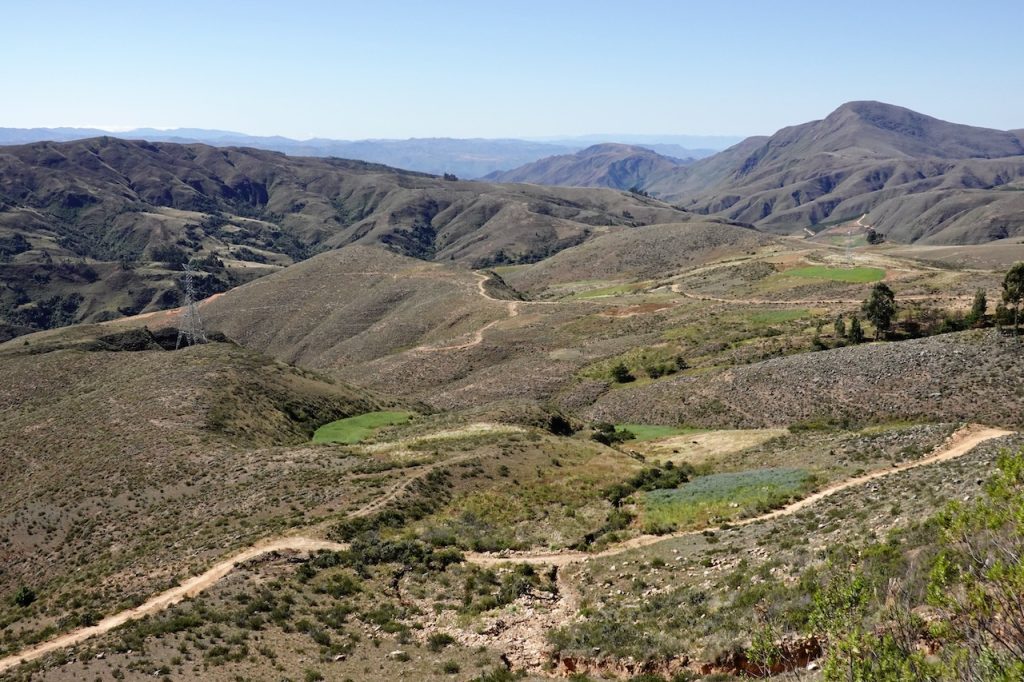

The last 50 kilometers before Cochabamba we enter the city area. We have to find a camping spot between the strip of buildings along the now wide, busy road. We spotted an unfinished building with what appeared to be a large piece of land behind it with trees and grass. TOP! (we think) But when we cycle carefree under the trees looking for a nice spot, Paul suddenly shouts “It’s full of spines here!!!!!”. We get off and inspect our tires. There are at least four spines in each of my tires. The sauce simmers out through it. Paul also ‘got hit’, but his tubeless tires (also with sauce) do their job perfectly. I manage to save my rear tire (temporarily, as it turns out) by placing my finger on the largest hole and very carefully letting air and thus sauce flow through the opening. However, the front tire is doomed. The sauce runs through the many holes into the tire, it cannot handle that much leakage. Paul cuts the large spines short and we leave them in our tires. Perhaps the sauce seals the edges around it better than the large hole that is created when we take them out. I clear a spot in front of our tent and help the farmer’s wife from the adjacent meadow to look for a calf (in vain). The next morning, to our surprise and delight, the remaining three tires are still hard, spines and all! Back on the road we replace my front inner tube. It is so stuck with hardened gunk that we can throw it out.
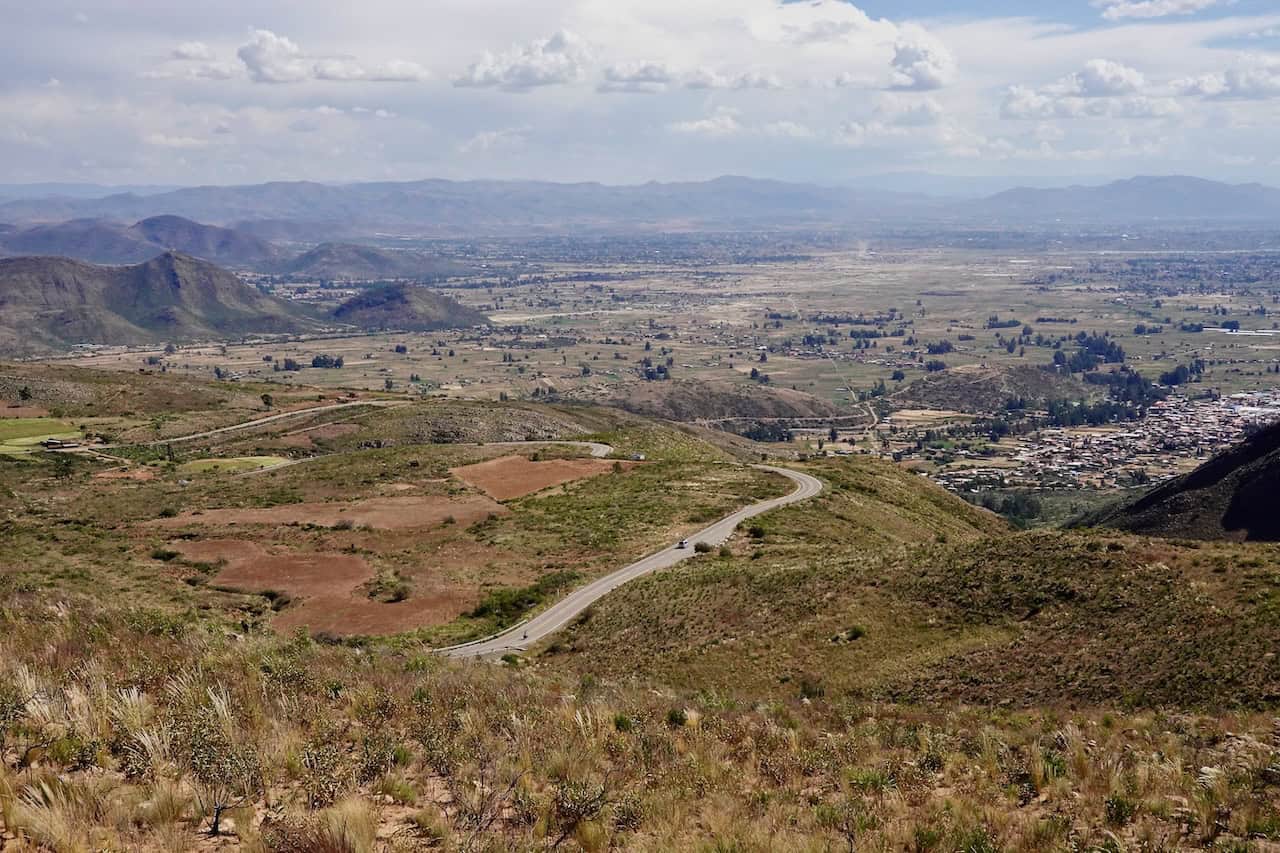

Cochabamba turns out to be a vibrant city, as the rhythmic name suggested to me. There is a HUGE market in the center that is connected to smaller markets via shops and rugs along the streets. In other words: it seems like the entire city is one big shopping area. Who buys all that stuff and food? We are amazed, search in vain for new lithium batteries, finally find a spanner size 10, eat a fruit salad with bright pink yogurt and fluorescent green ice cream and drink a coconut. We have now received a message from two French cyclists that the Salar de Uyuni is dry. And therefore cycleable! We were actually planning to travel from Cochabamba to La Paz, but the thought of cycling on the largest salt flats in the world is very tempting. So after three days in Cochabamba we decide to take the night bus to Challapata and from there cycle to the salt flats and then cross them in a few days.

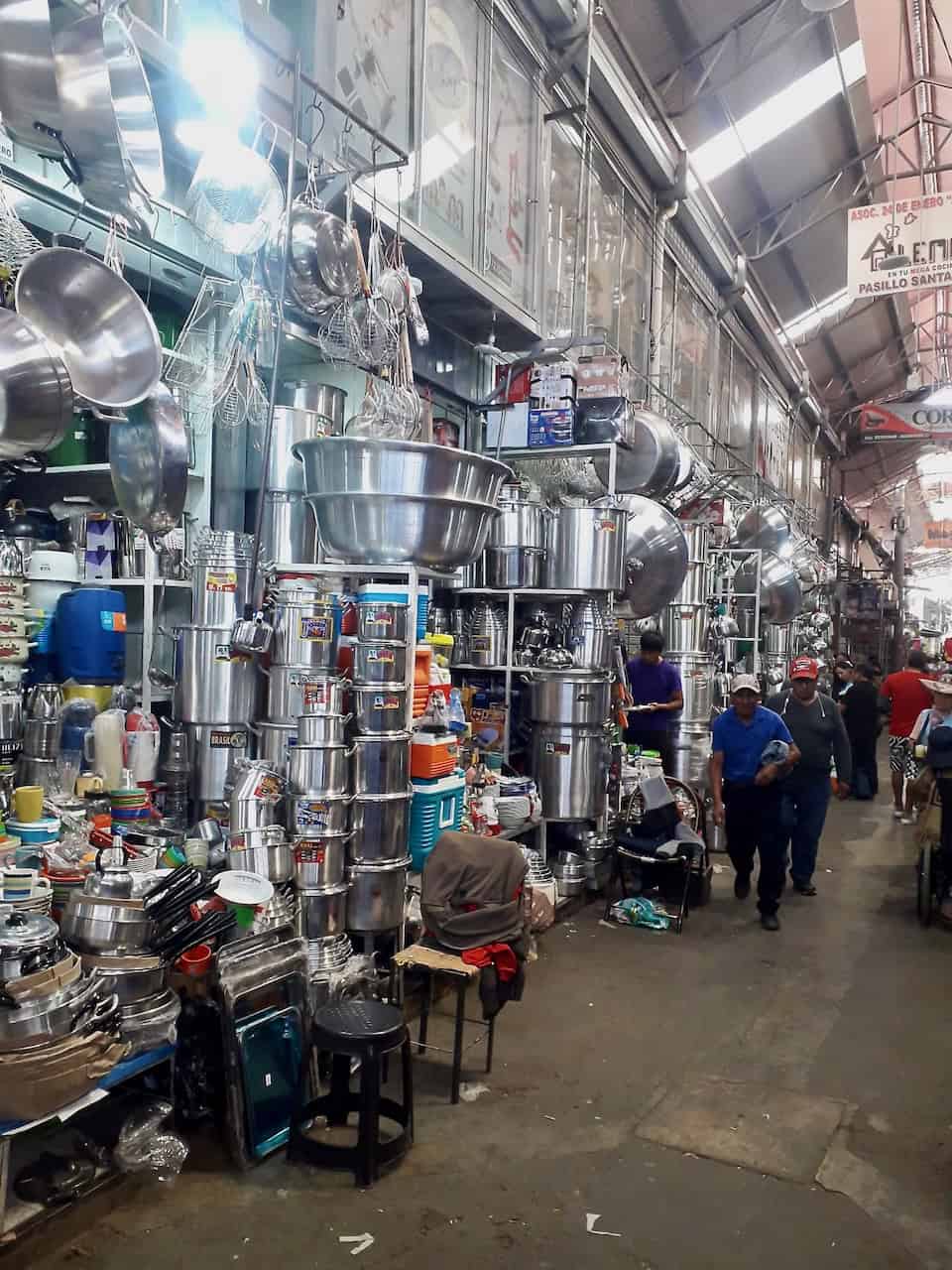

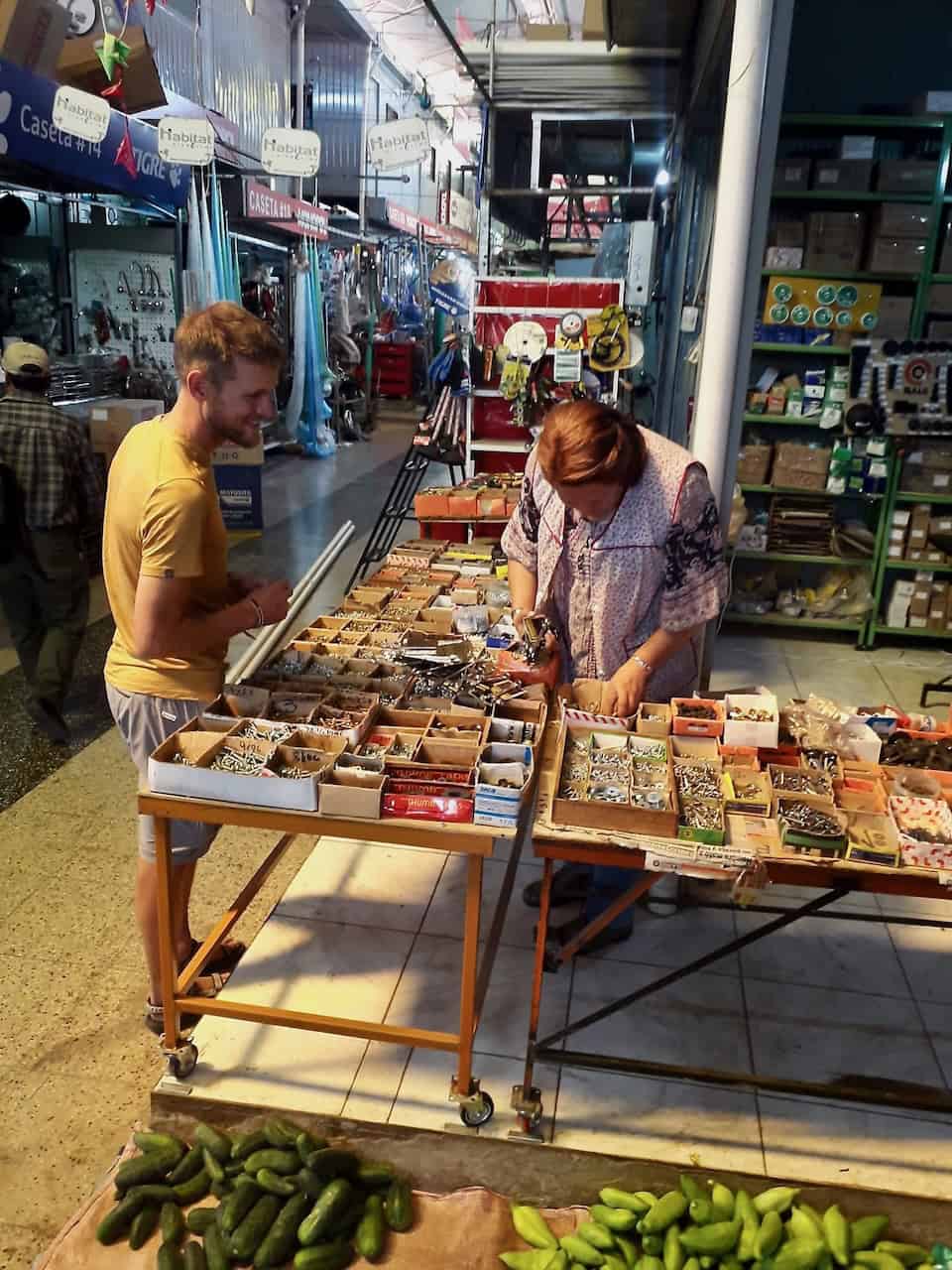

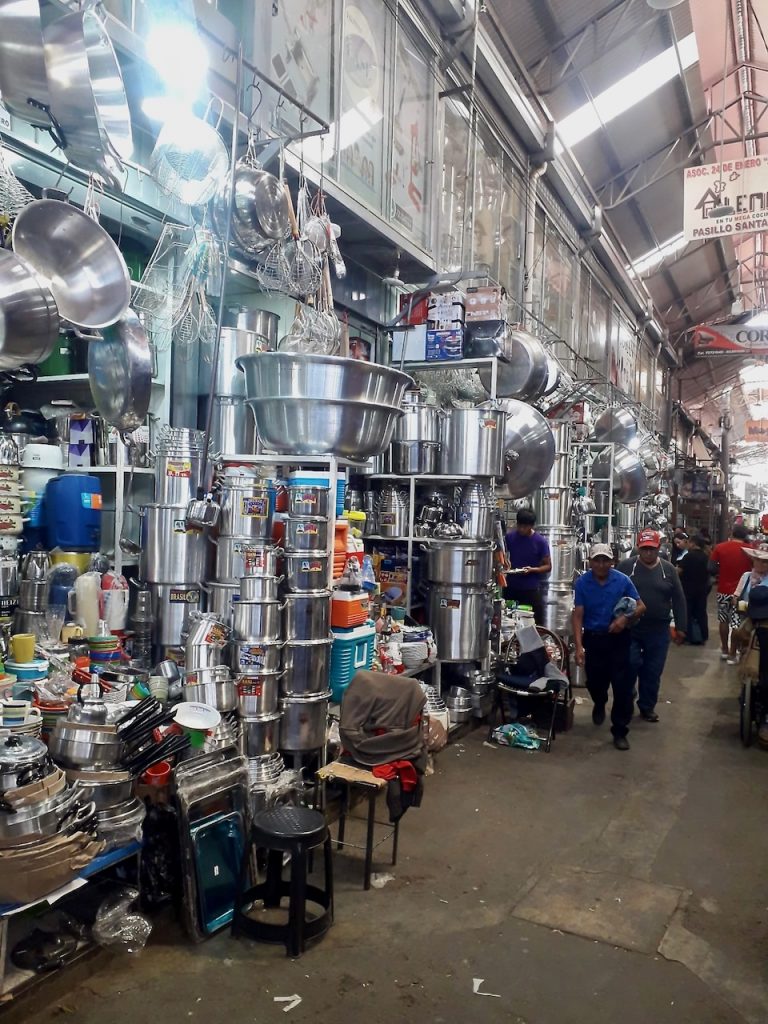
We expected the route to the salt flats to be boring. Flat, dry. But the mountains in the distance, some small villages and crossing llamas make it a pleasant trip. When we arrive in the first village on our route, around 8:00 in the morning, life is already in full swing there. Or actually still in full swing. People are having a barbecue in front of the church and throwing beer cans and bottles around. Some drunken men wander across the street and we meet other (less drunken) men in colorful carnivalesque clothing. It turns out: there is a party going on that started the previous day and will end this morning around 9:00 with a ‘grande spectacular’! We sit on a wall and prepare breakfast while we are amazed at the different states of drunkenness we see passing by while some children in immaculate school uniforms move in the opposite direction. Suddenly we hear a cacophony of pan flutes. You can recognise a melody of about four bars that repeats and repeats itself. A group of colourfully dressed men comes dribbling around the corner. They dribble through the village at a walking pace, whistling. A drunk with a referee whistle seems to have joined the group and whistles sharply and monotonously along with the bubs. A second pan flute corps appears in another corner of the square. They meet in a corner of the square and circle around each other while blowing their pan flutes. There is some dancing… we wonder if this same ceremony might have looked and sounded better the day before. Yet it is clear that we are witnessing a special local tradition. When after a while they leave little by little (I hope towards their beds) we also get on again. One flutist happily poses for a photo. From a shopkeeper on the edge of the village we hear that it is a local traditional festival that is a combination of a celebration from ancient culture and the Christianity brought by the colonists. A festival that is only celebrated in this village.
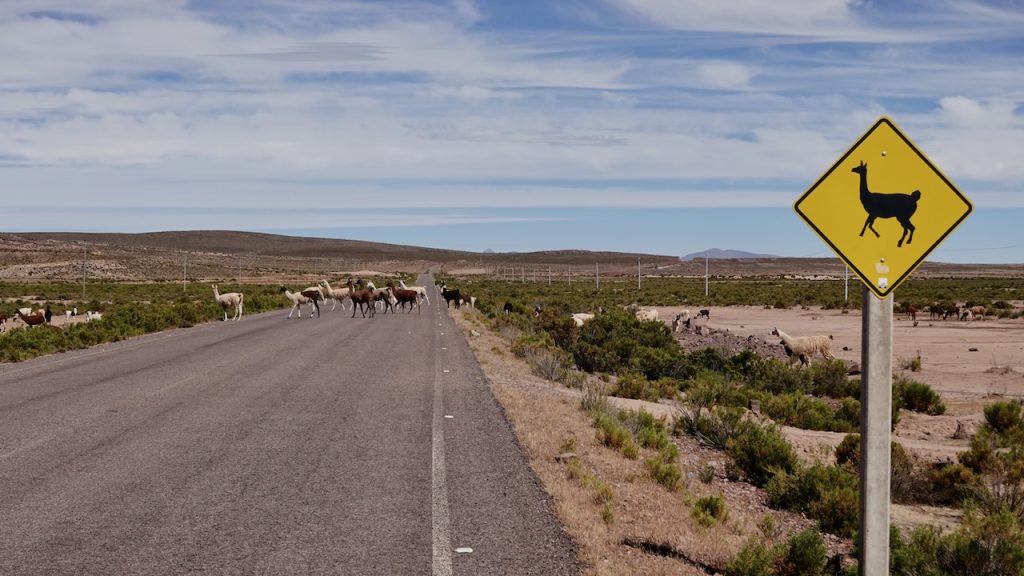


We have a special place in mind for the night: a crater! We only know that it is there but not what exactly to expect. However, when we stand at the edge, we are pleasantly surprised. It is a beautiful and special place. In the crater there is a shallow pink-colored salt lake around which fields have been laid out like the sun’s rays. Llamas graze on the shore of the lake. Up there on the edge we meet a youngster who is walking around bleating. Looking for his family? We try to make it clear that the other lamas are all down in the crater. Eventually she bumps out of Paul and into the crater, hopefully back to her mother.
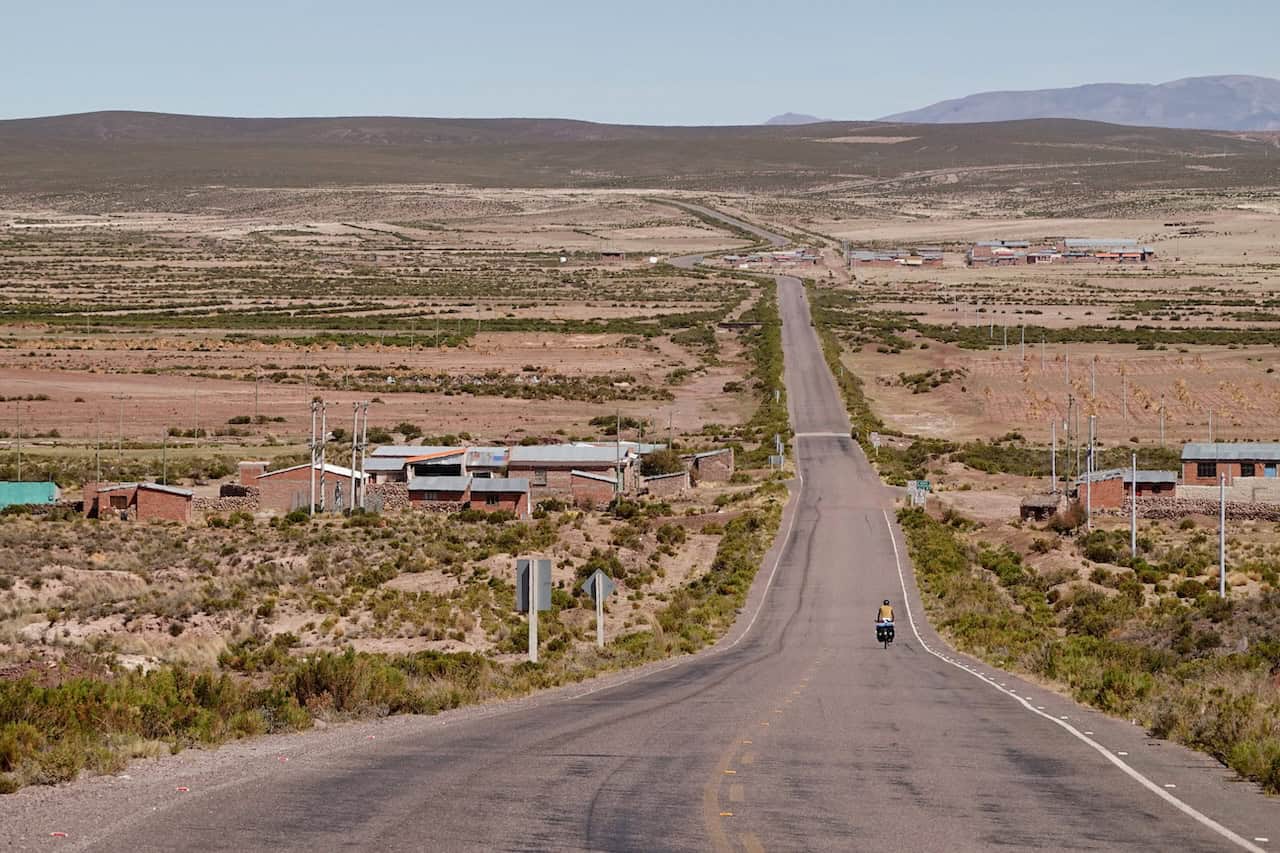
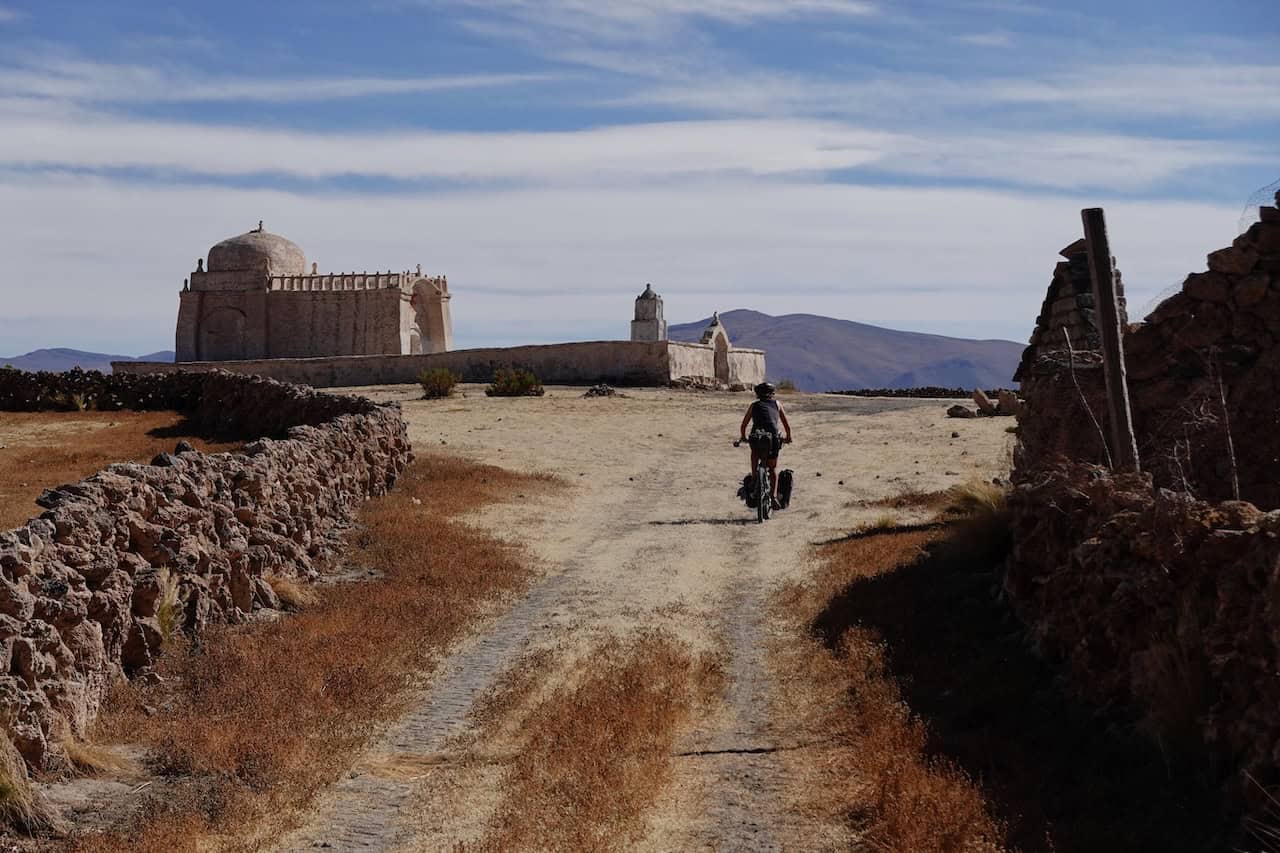
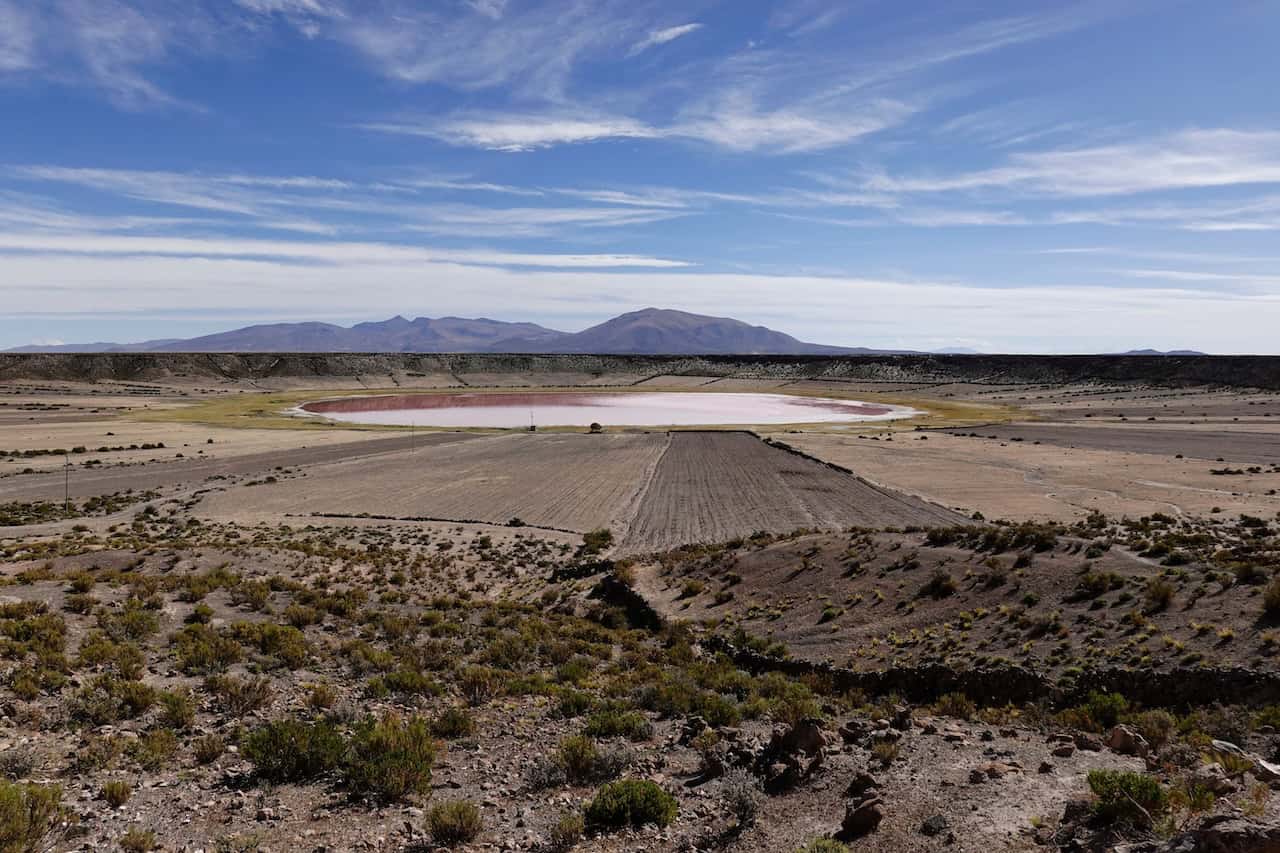
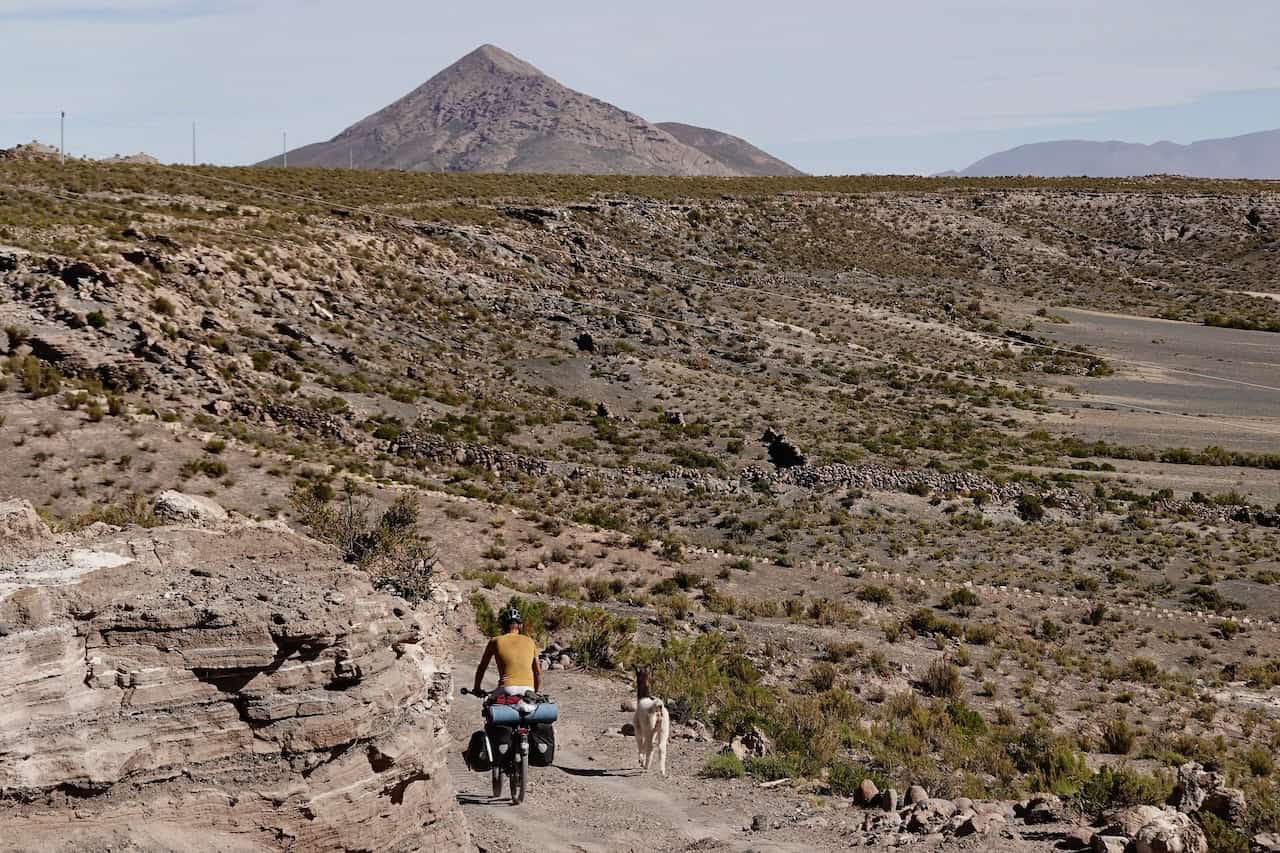
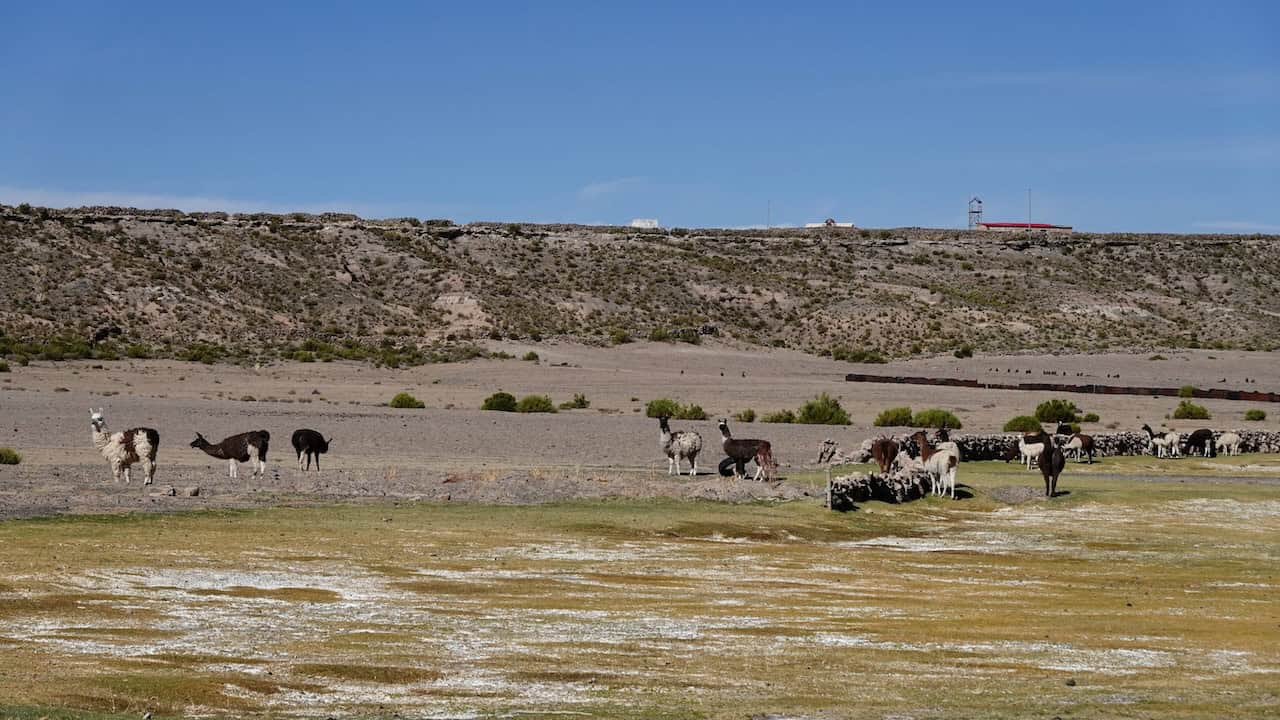

We are really enjoying being back in our tent. A hostel bed is sometimes nice, but nothing beats our own fabric house under the stars. It is dead quiet here in the crater. The night at an altitude of 3650 meters is pleasantly cool. Finally we can crawl into our sleeping bags again without overheating. The next day we cycle further towards Salinas de Garci Mendoza, the last village before the salt flats where we have to stock up on food for 2,5 days.
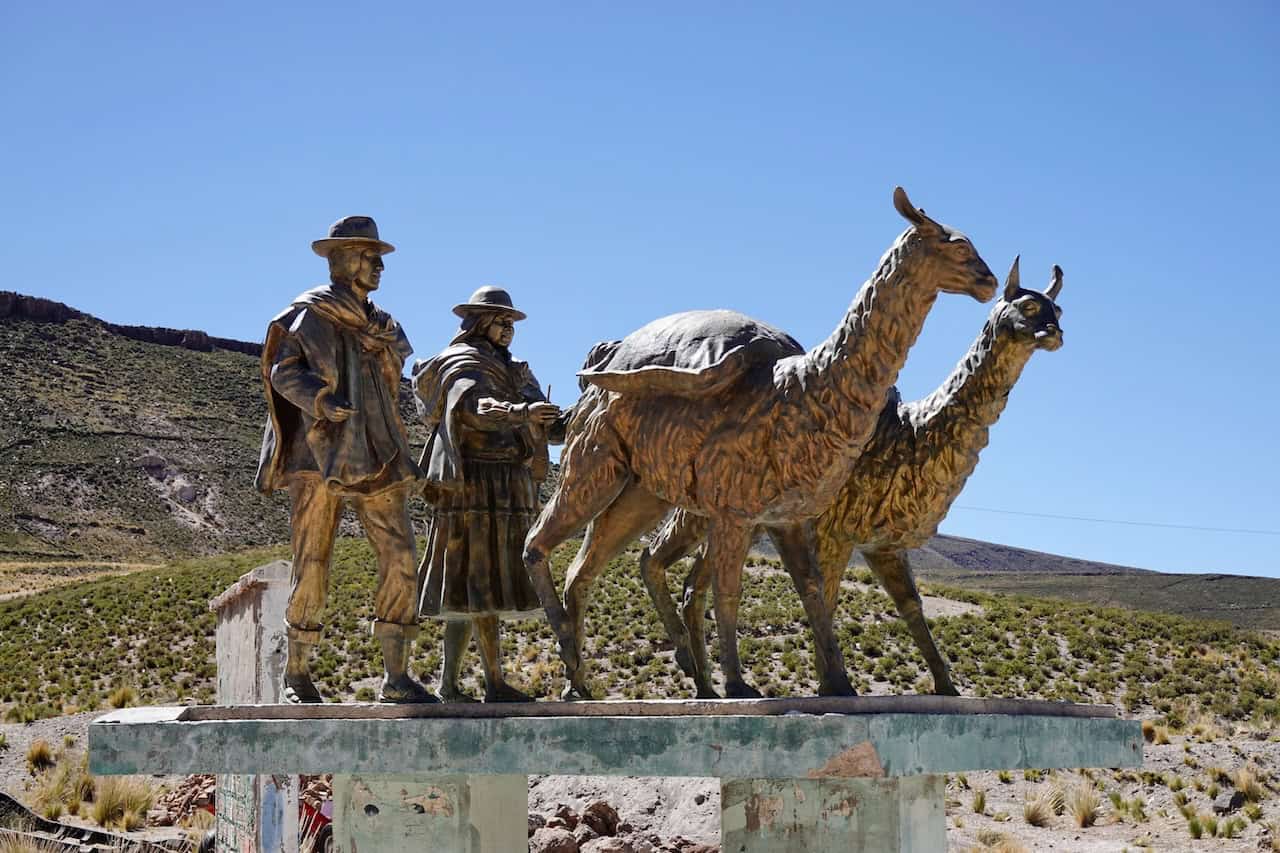

The village is located north of the 5321m high volcano Tunupa. An impressive structure of nature. To get to the Salar we have to cycle around it on a bumpy dirtroad. However, we discover that we can also cycle over the salty sandy plain next to it, which is a lot more pleasant than the last stretch of bumpy trail that we are ultimately forced to take. There we see again the strange red-orange plants that we saw harvested in the fields earlier these days. Thanks to a statue with a title, we now know what it is, quinoa! It seems to be the only crop grown here in large quantities and everyone is involved in growing and harvesting this ‘grain of the gods’. That night we camp on the grass between the salt flats and the village of Jirrira. The sun disappears early behind the volcano and in the wind it is suddenly freezing when we quickly wash ourselves with a wet cloth before putting on our warm clothes. The waxing crescent moon creates a beautifully dark night with a twinkling starry sky.
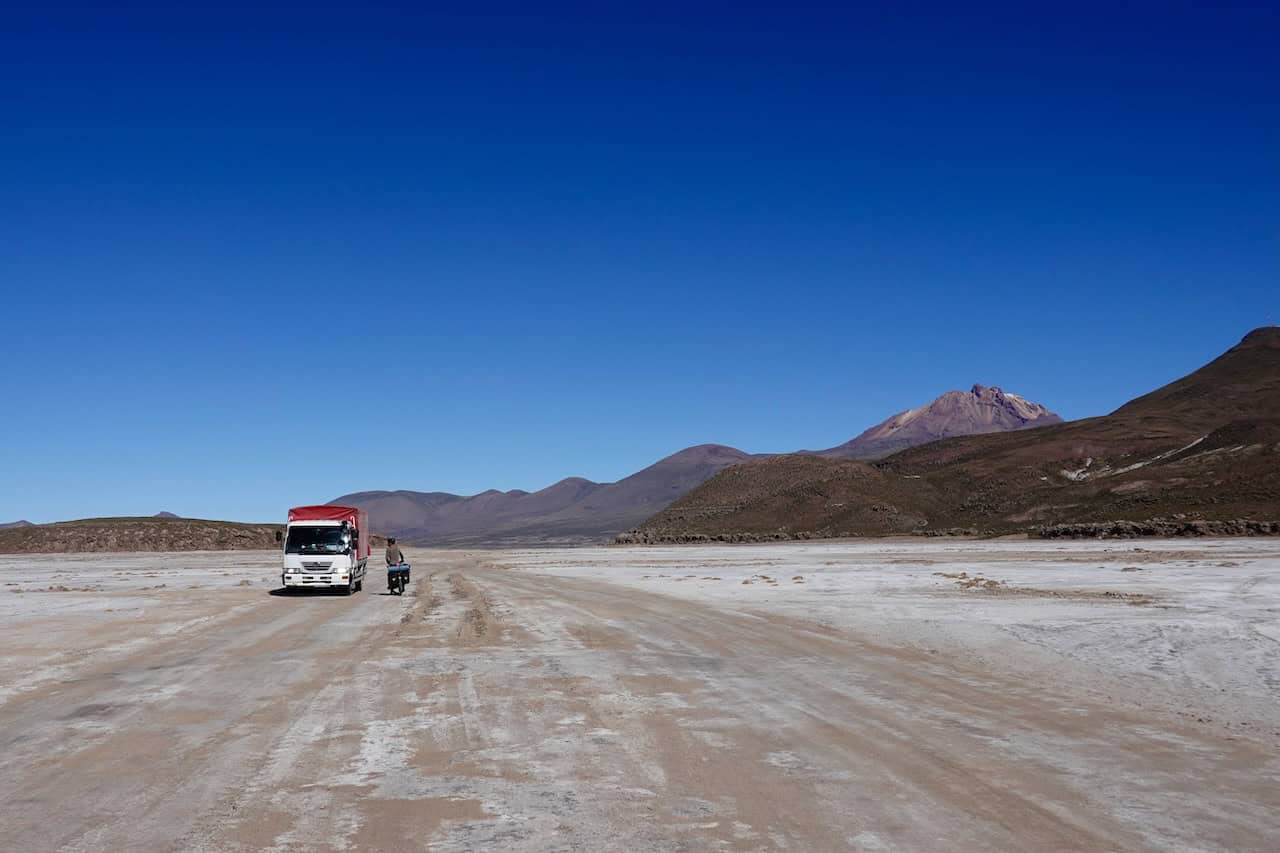
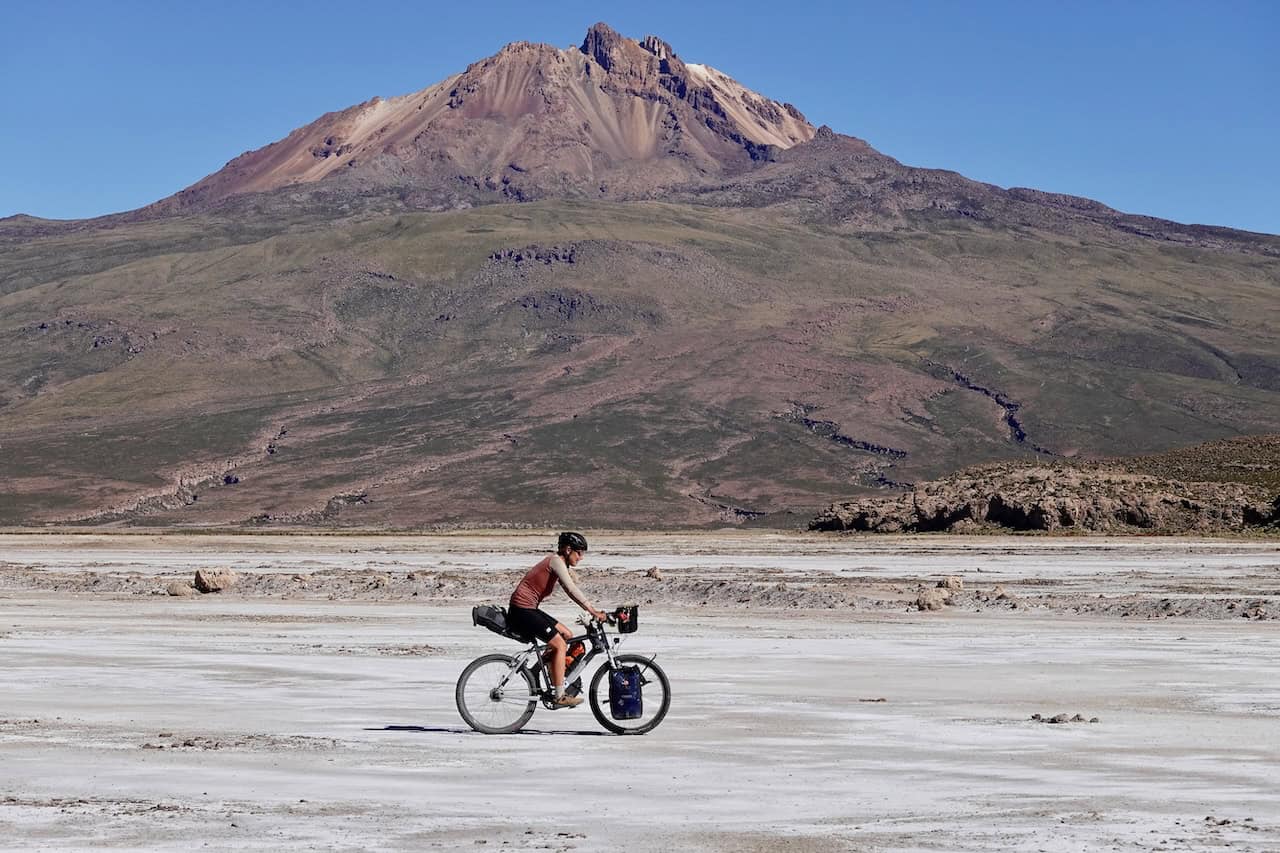
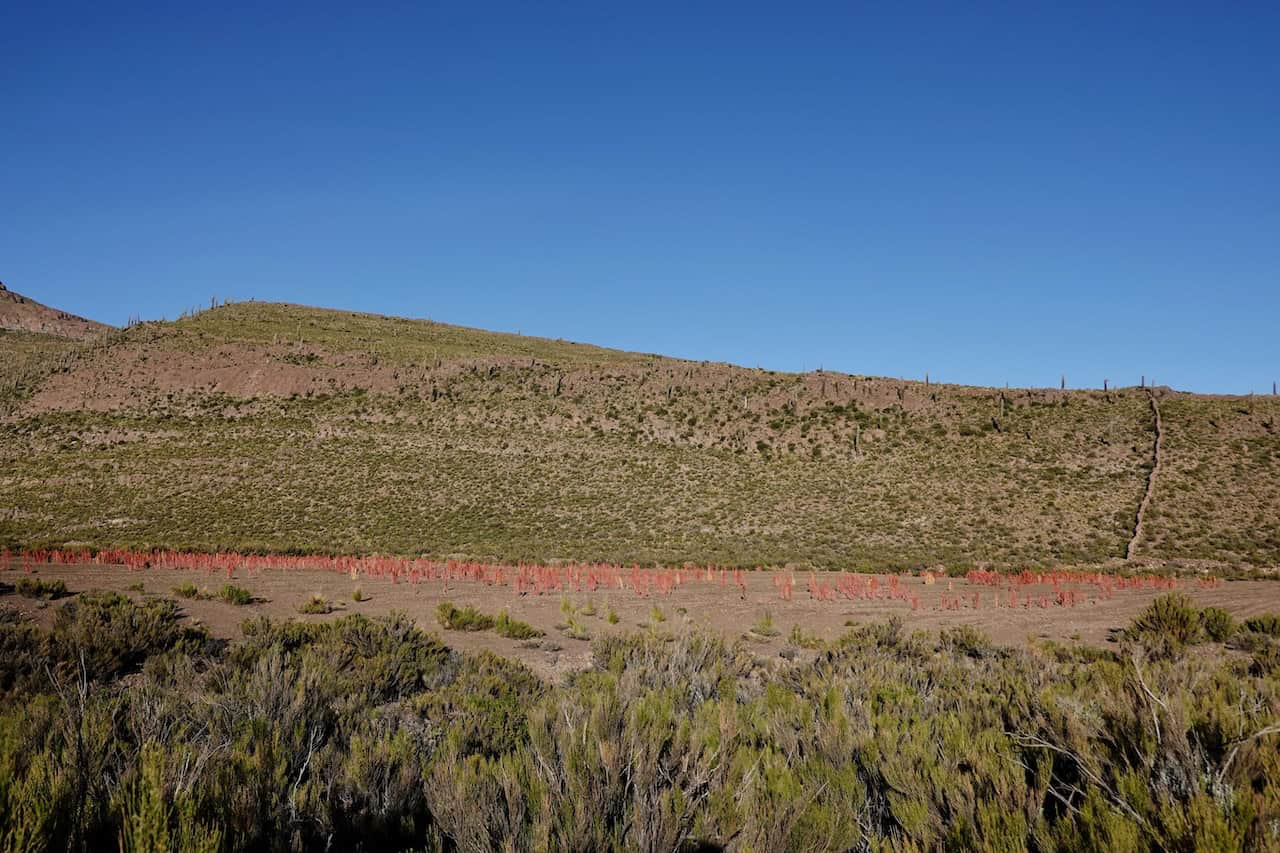
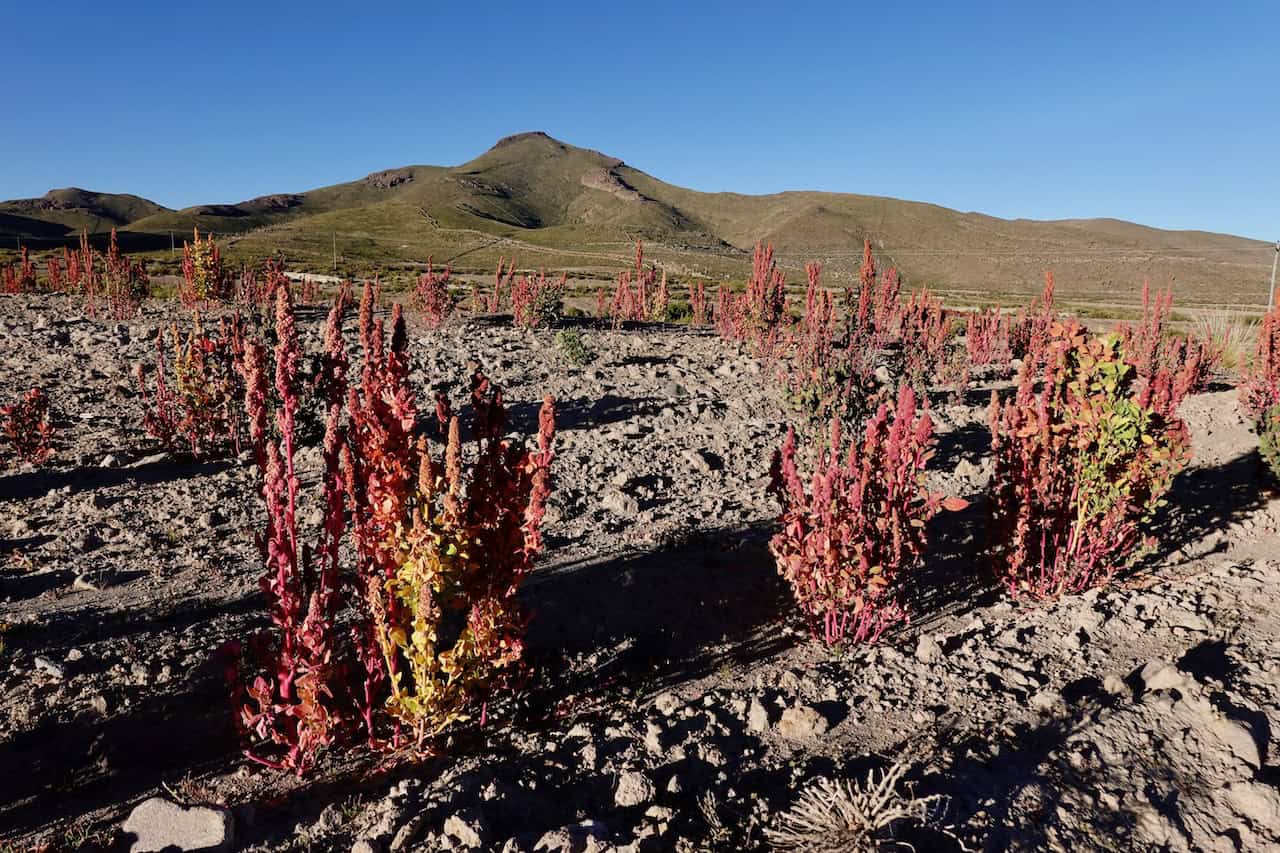

The next morning we ride onto the salt flats. This is what we had hoped for when we cycled into Bolivia! What an impressive sight it is. An area of almost 11,000 m2. Salt as far as the eye can see. More than a quarter of the surface of the Netherlands. The plain was created from a prehistoric lake that evaporated due to climate change, leaving behind a crust of several meters of salt. It houses 70% of the world’s lithium supply and it may only be a matter of time before this white world is destroyed by the greed for lithium. After all, we ‘need’ that to provide all our wireless devices with batteries. But for now… it’s still there! In the southern summer the plain is covered with rainwater, in the dry winters it becomes passable. The salt at the edge is bumpy but we can follow the tracks left by cars. We are soon overtaken by a motorcycle with two riders, who are also the only people we will see up close these days.

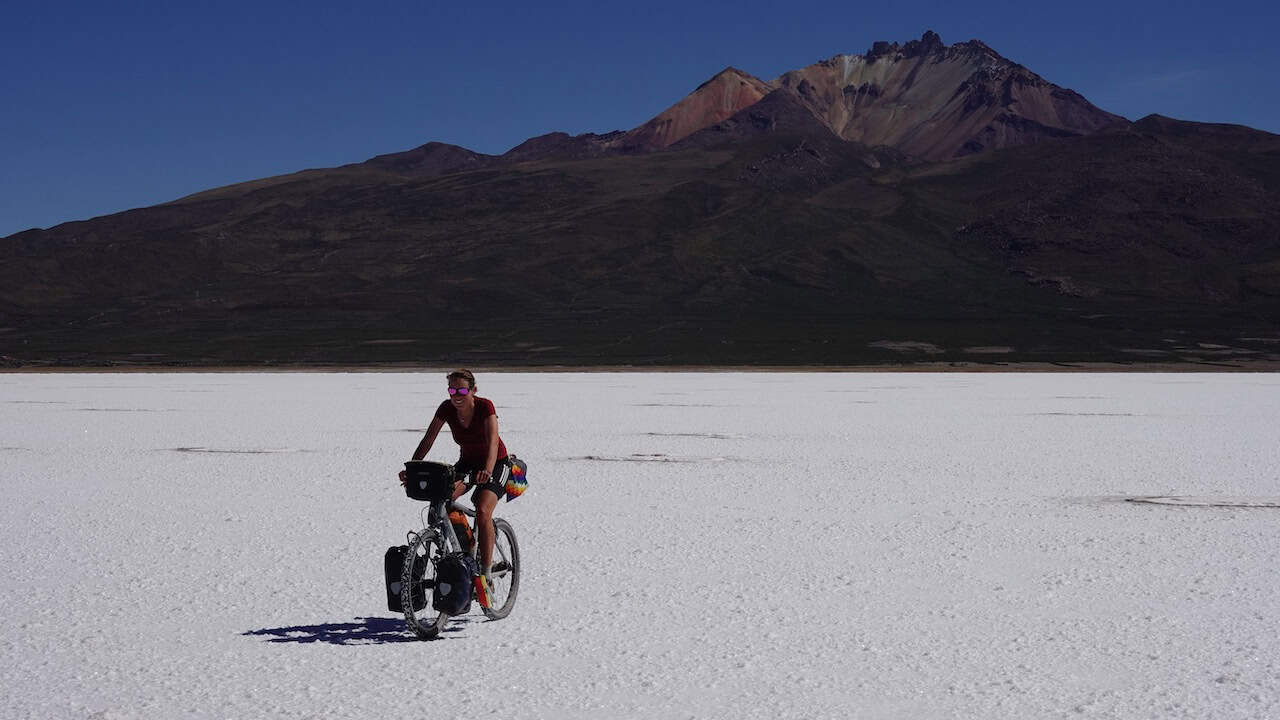
After extensive consideration, we decide not to go to ‘the island’. An island in the middle of the salt flats where Incas used to live in caves and which is now the destination of all tours across the salt flats. This environment is so special, so vast and serene. We have no need to have that disturbed by hordes of tourists in jeeps. Besides cycling and camping, we only have two activities on the program. One: taking crazy perspective photos. Two: take naked bike photos. Every tourist who visits the salt flats does the first and such a photo session is included in every tour. The second part, naked bicycle photos, may surprise you. It is a tradition among cycling travelers to take naked photos on the Salar de Uyuni, in which the ‘private parts’ remain just out of view. I have seen so many such photos on social media over the years that I now consider it an obligatory part of the Salar crossing.
When we find a nice piece of salt we decide to start with the perspective photos. We already joked when waking up this morning that this is Giraf’s BIG day. Because the photo that must be taken is of course of Giraf the size of us and our bicycles! He’s looking forward to it and has been sitting in his pouch on my handlebars all morning talking about nothing else. Like a true model, he poses for a whole series of photos. And we have to say: the result is impressive!
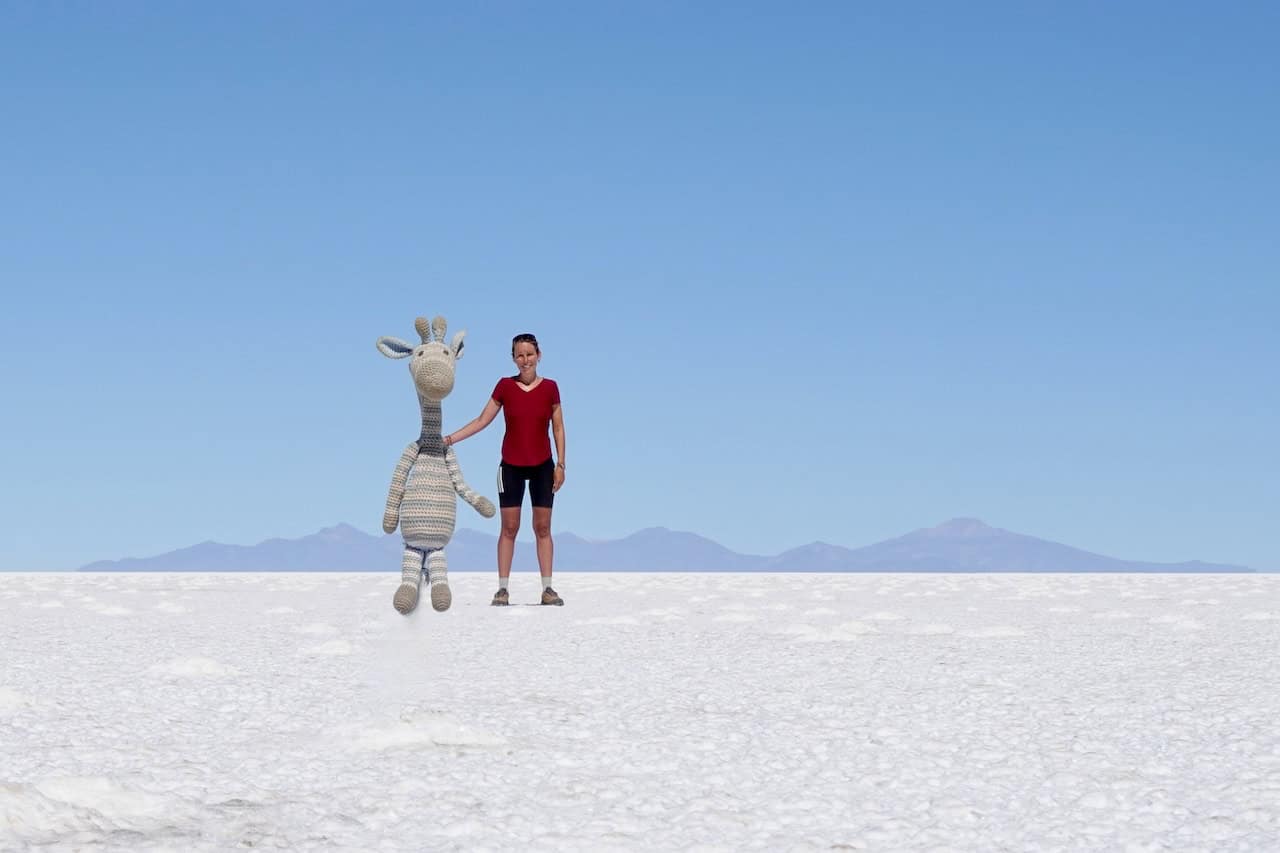
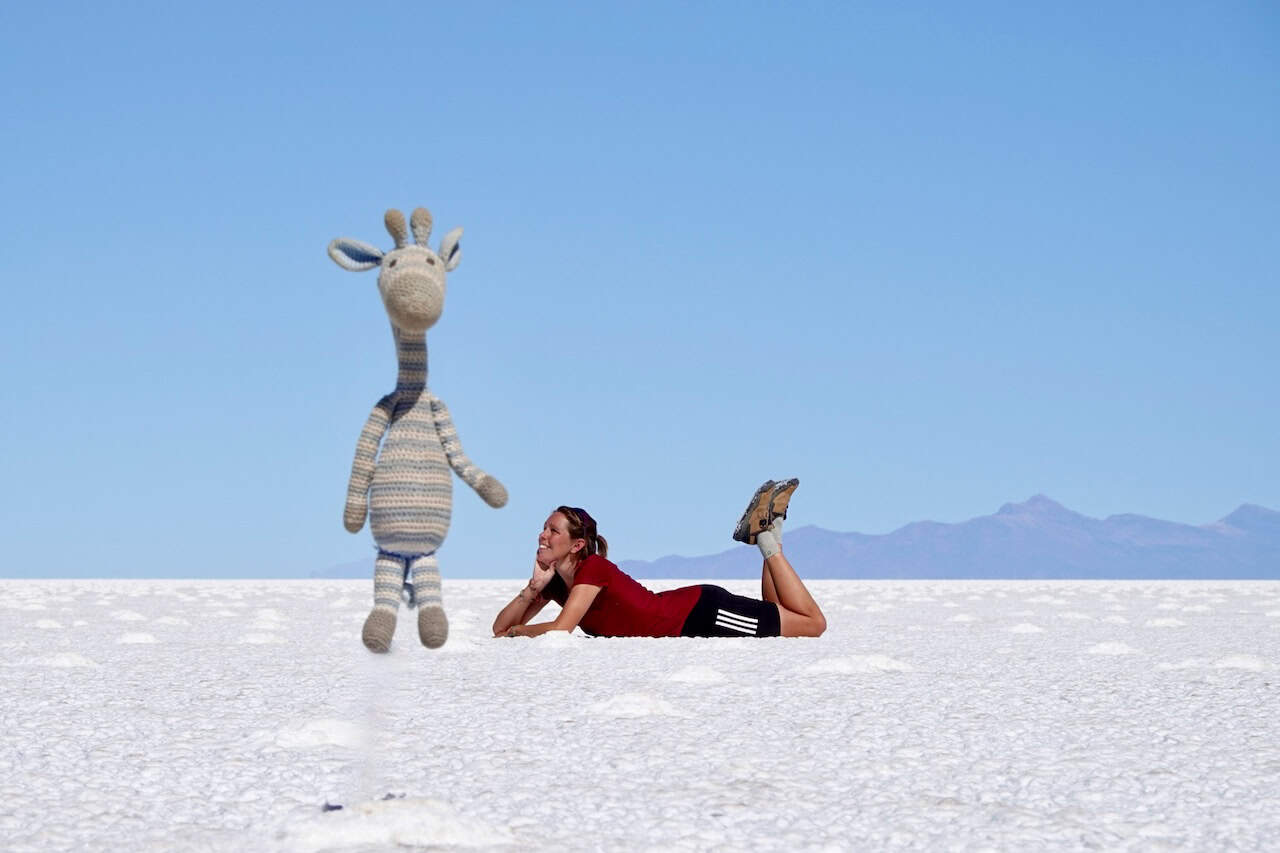
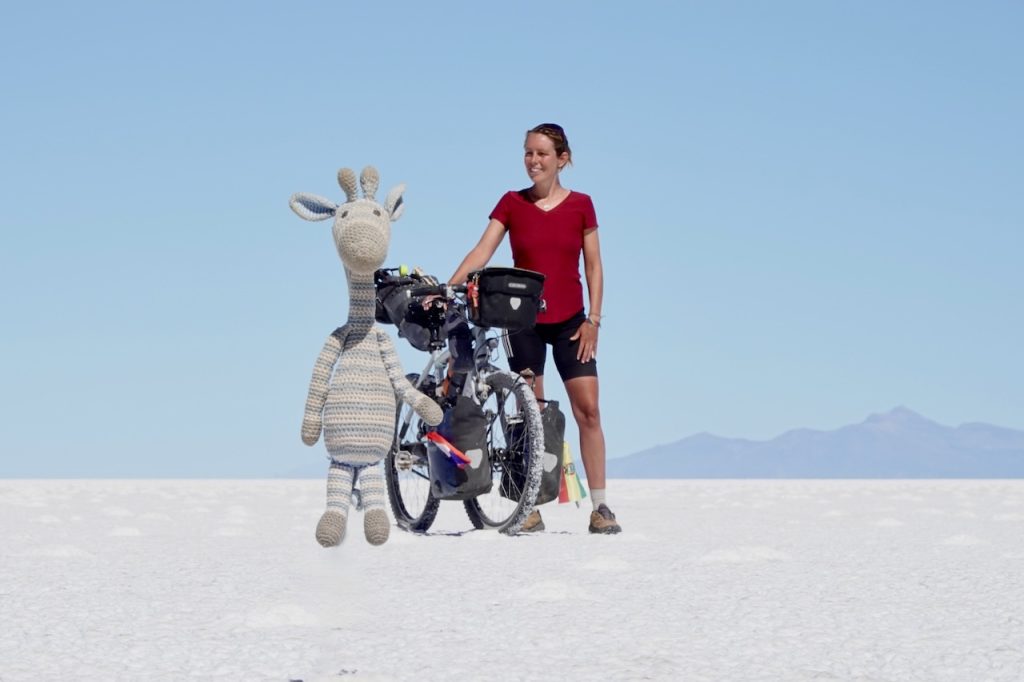
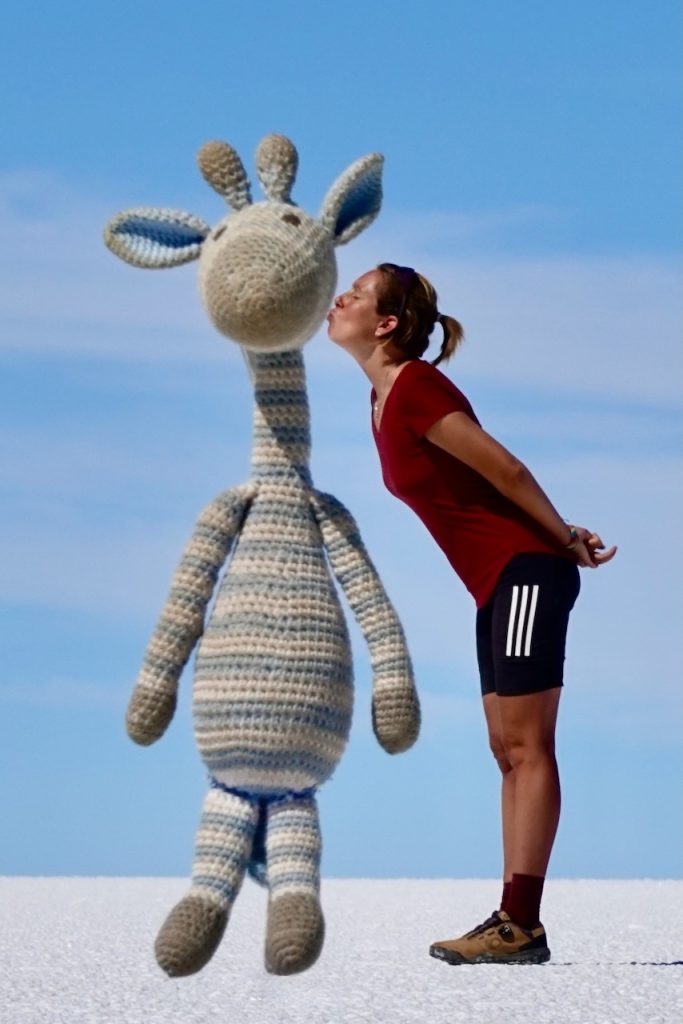
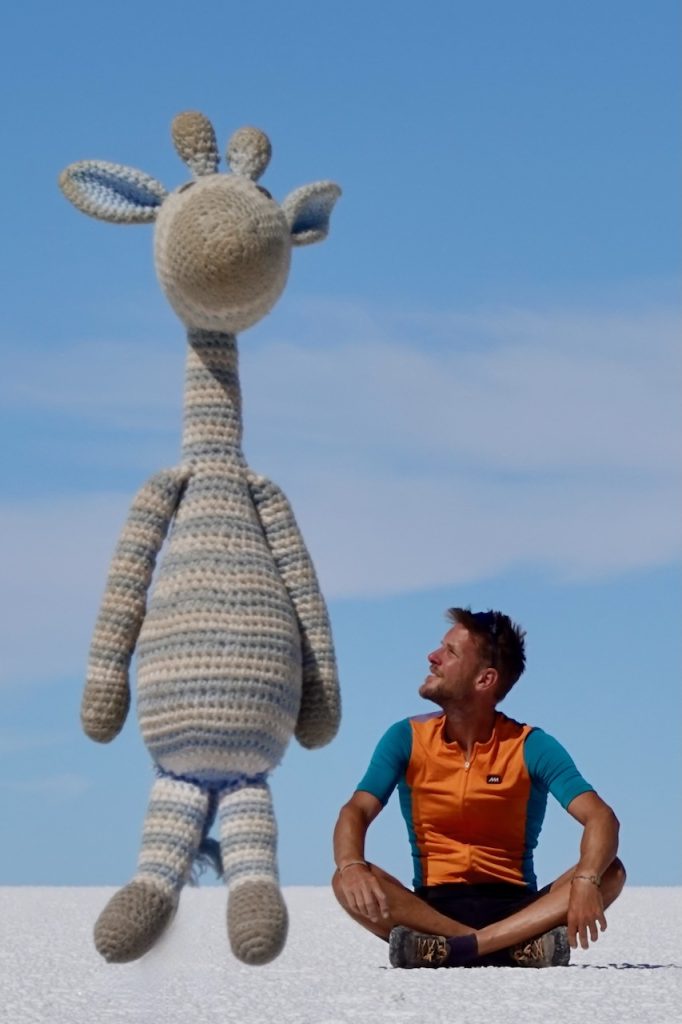
When we both have a headache from peering through the viewfinder and at the bright white light, we call it a day. Time to cycle again. A little later we have a picnic in the shade of our bicycles where I soon feel quite chilly. After about 35 kilometers we thought it was a good day and we set up the tent nice and early. We simply determine the spot by letting our bikes coast to a stop. The sun sinks into the salt and turns the sky above the volcano bright orange.

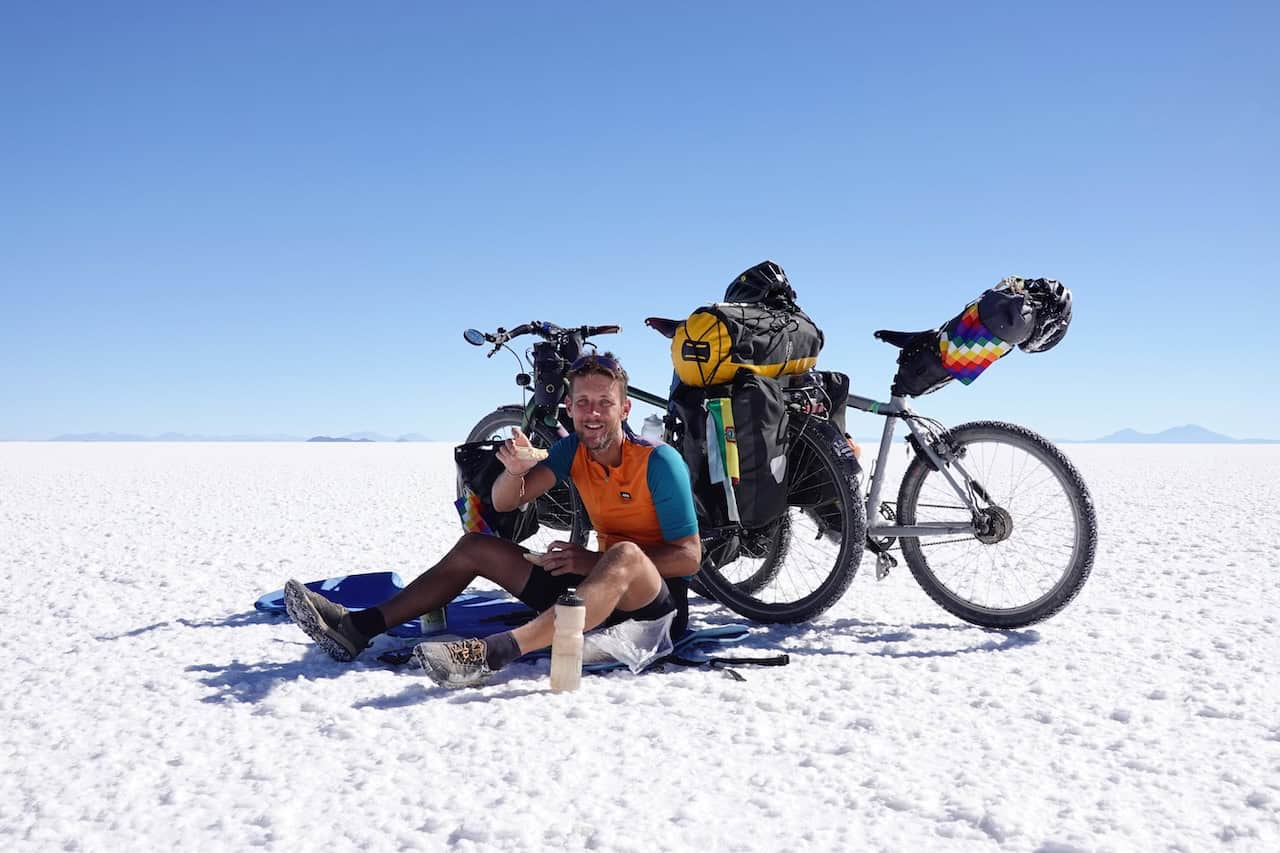
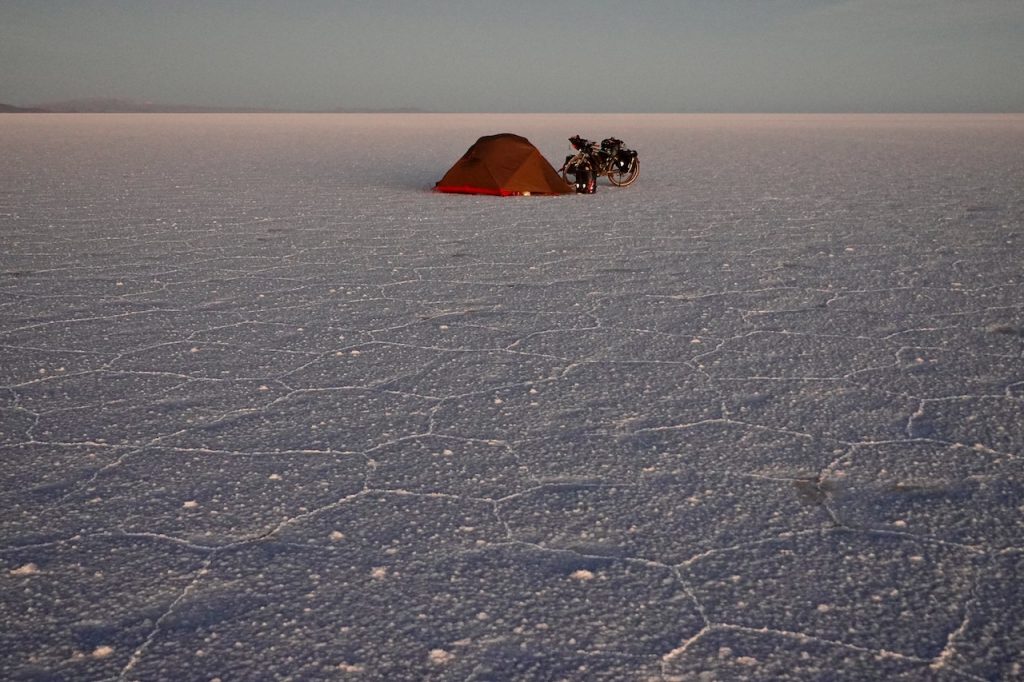
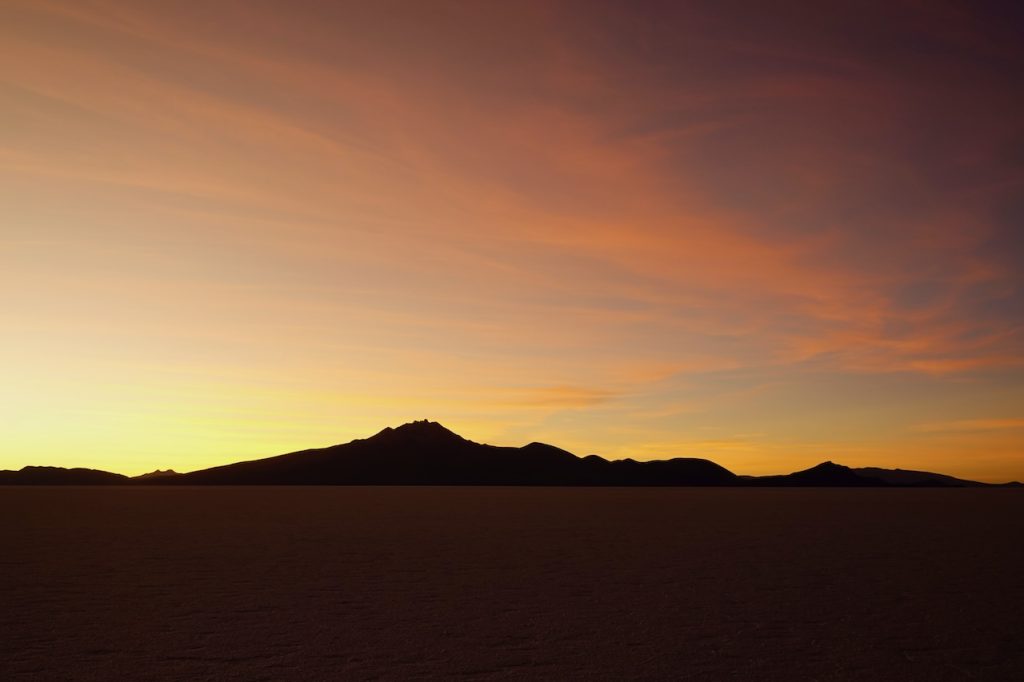
Day two begins at the Salar de Uyuni. And so was the day for program part two. Once we have packed up our tent and I am putting on my cycling clothes, Paul suggests that we start right away: the naked photos. Not that he’s eager about it, but ‘then we’ve had it’. The chance of an audience increases as we get closer to the other side (and main entrance) of the plain. So I take off my cycling clothes again and jump on the saddle with my bare buttocks. WHAHAHAHAHAHAHAHA! How strange that feels!! In the sun, the fresh air, barefoot, cycling around the largest salt flat in the world, 3650 meters above sea level. Can it get any crazier? Paul also has to put up with it and I actually see a smile on his face as soon as he also cycles around in his bare buttocks. We take some pictures of each other and end with a picture of us together using the self-timer.
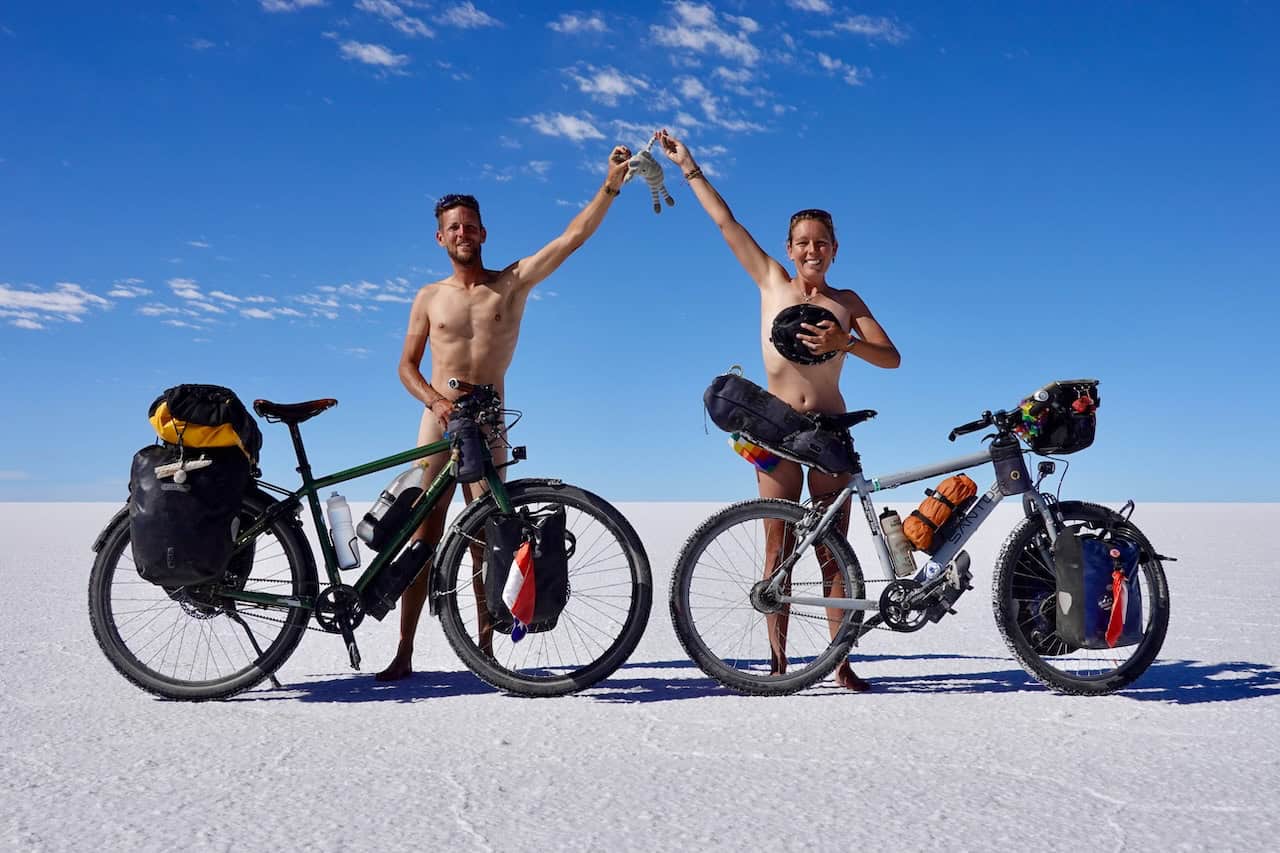
We have faithfully fulfilled the tradition of bicycle travellers on the Salar de Uyuni! We quickly put on the socks and shoes and the rest because the salt is as cold as ice. When we get back on the bike we see some ‘wakes’ in the salt. They are filled with water up to about 20cm below the edge. It’s hard to see how deep they are. In some you can see beautiful salt crystals on the walls. After the trip I read on the internet that the space under these small openings is often meters wide and deep. They are caused, among other things, by the exchange of heat and cold and the ingress of salt by fresh (rain) water. The local community calls them ‘ojos del diablo’: eyes of the devil. Especially when there is a layer of water on the Salar, they can be quite treacherous when you drive across the plain.
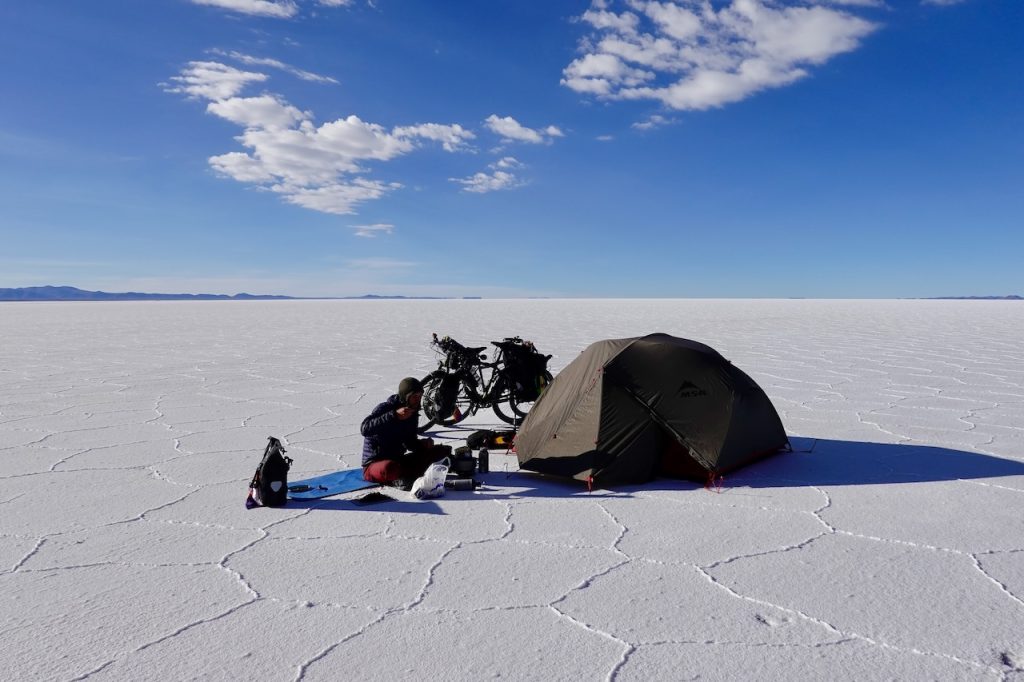
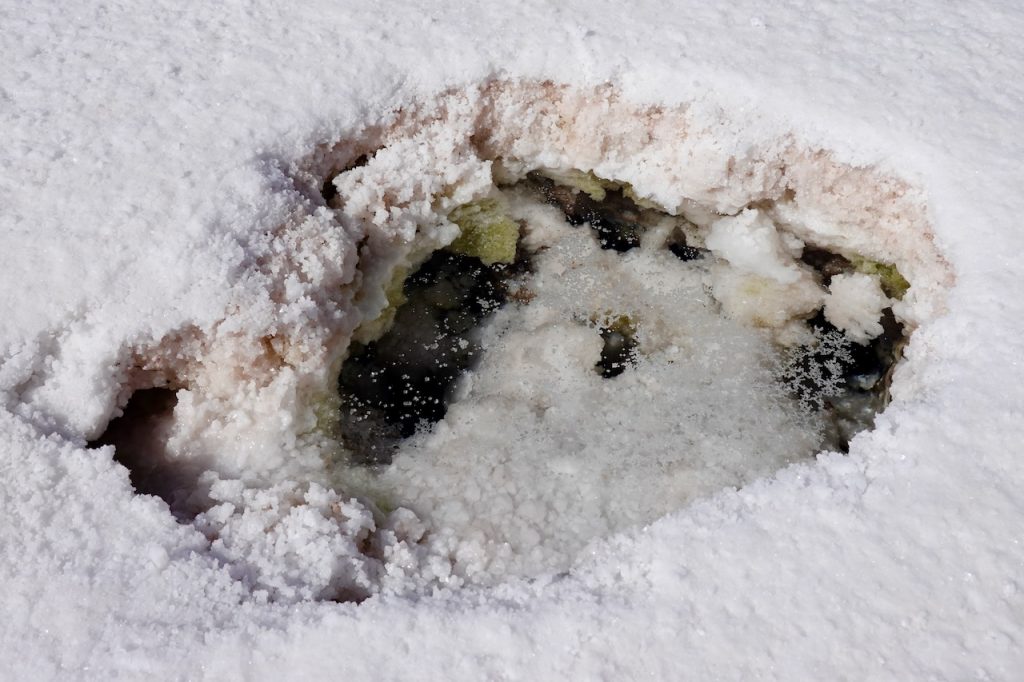
Giraf may have had his BIG day, but we are not yet completely satisfied with our collection of perspective photos. In addition, on such a vast plain you have to look for reasons to take a break. There are no nice villages or sights here that require a break. We sit back on the cold salt and rack our brains looking for fun ideas for snapshots. See here what this resulted in…

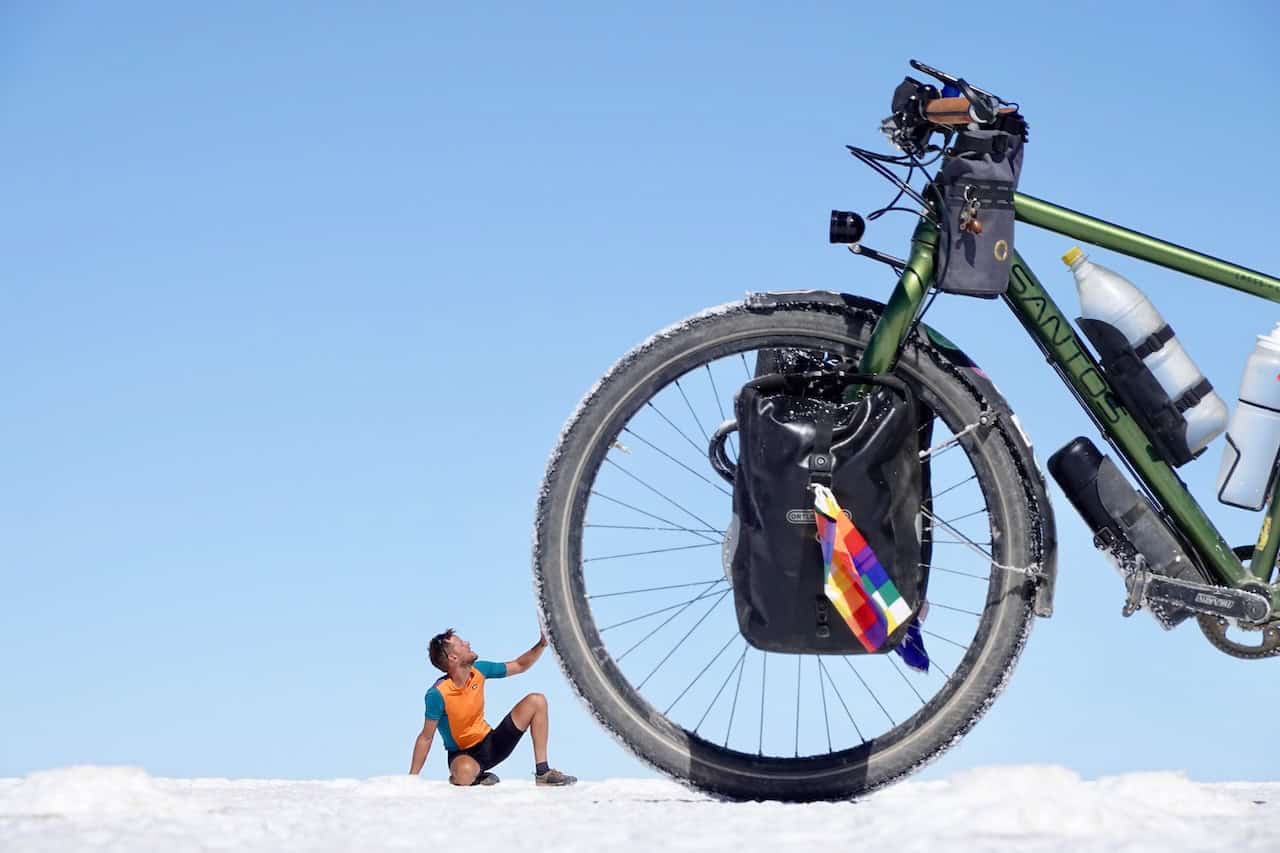
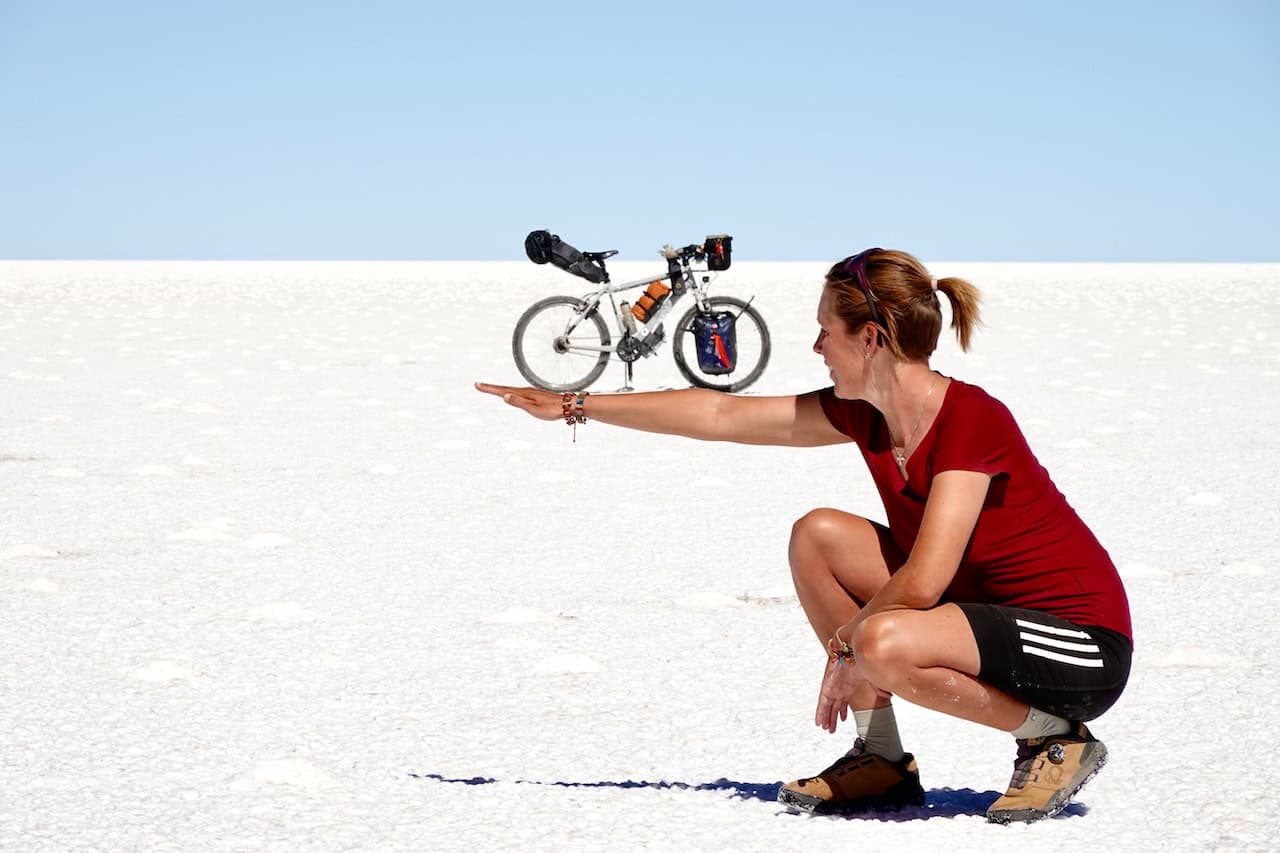
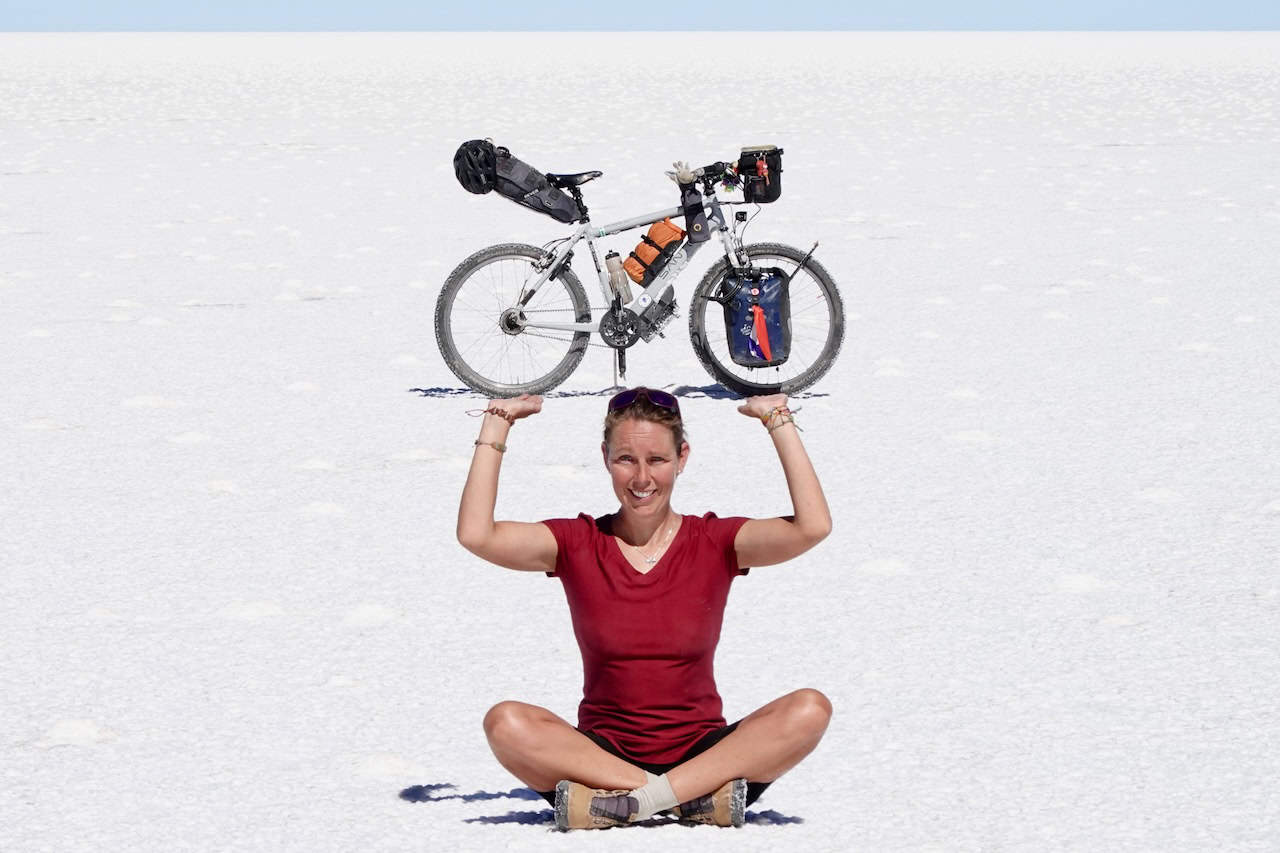
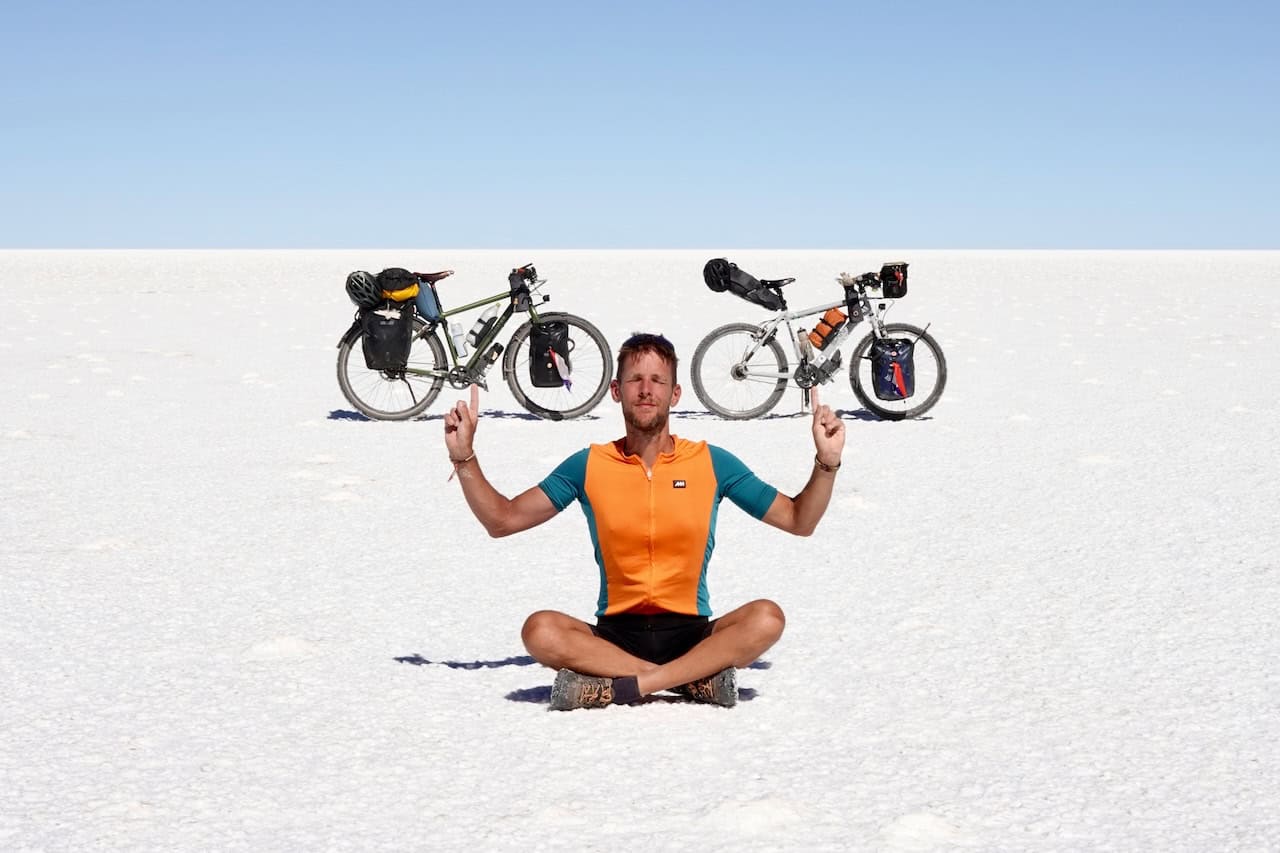
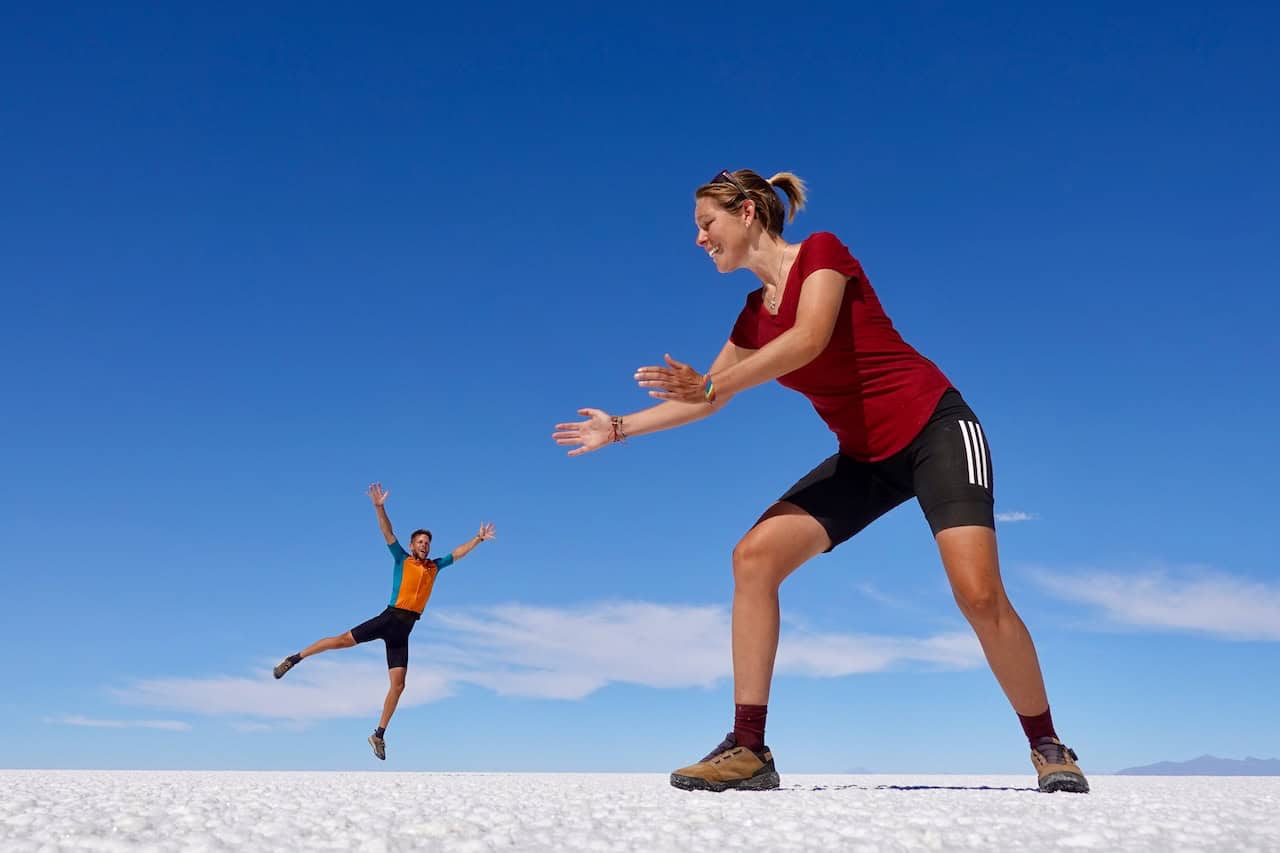
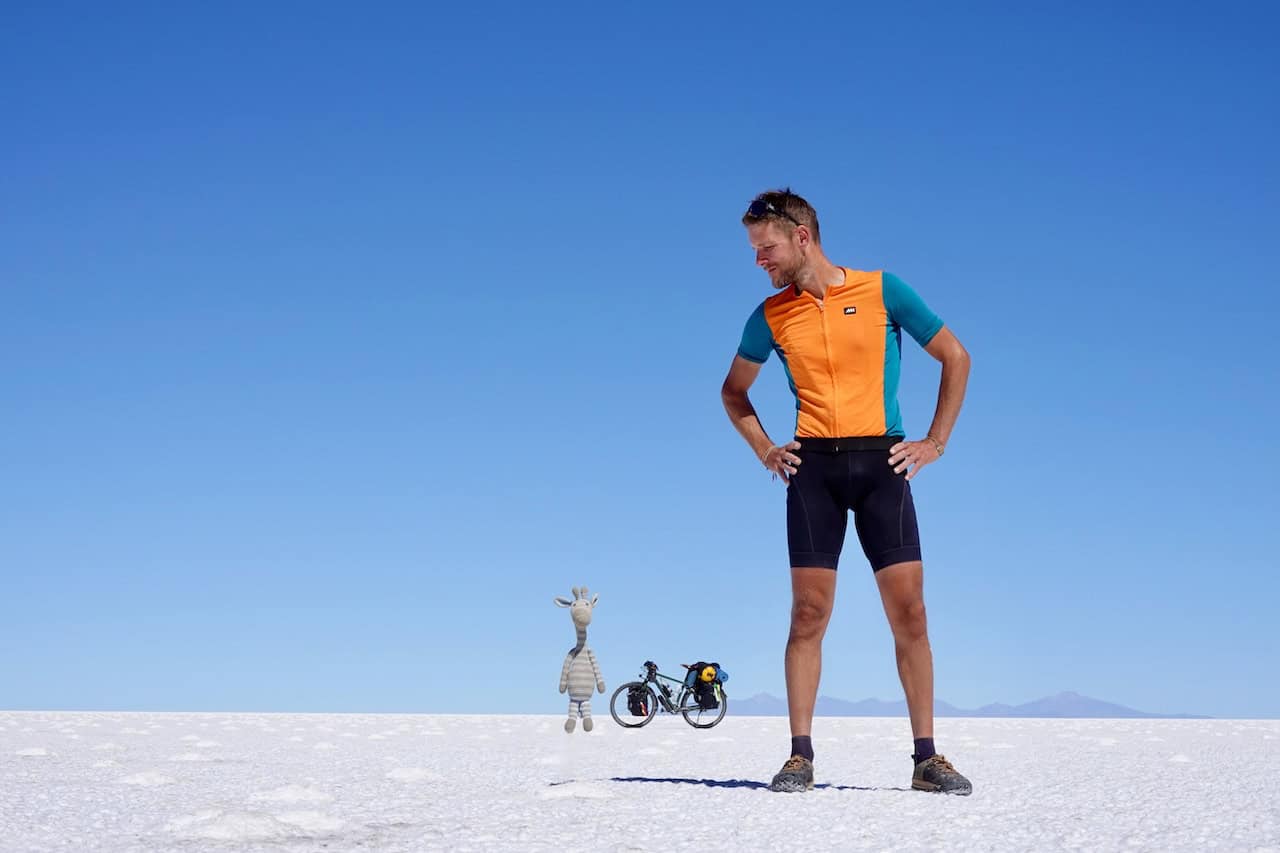
The salt is not of the same nature or quality everywhere on the plain. While cycling we sometimes follow a car track and sometimes we drive straight across the untouched salt flat. In some parts it is full of hard bumps. Cycling over that is not an option. In other places it is almost smooth and you only hear the crunch of the salt under your wheels as if it were snow. In other places it divides itself into areas of about one meter in diameter with soft raised edges. We pitched our tent in such a place the second afternoon. We quickly wash ourselves while the sun is still shining brightly and because we stopped early we play a few games of Claim (card game) in the afternoon sun. Our sunburn-deprived skin hidden beneath long clothes and buffs.
When it gets cold and dark, Paul crawls into the tent and I go on my evening ‘walk’; an attempt to warm up my feet before crawling into the sleeping bag by walking, stomping, dribbling and dancing around. This is certainly not a punishment this evening because I am treated to beautiful colours in the sky and the appearance of the first stars. When I finally crawl into my sleeping bag, with lukewarm feet, we listen to a podcast together. Then it is Paul’s turn to go out into the cold for a while. Because a photo of the beautiful starry sky with the Milky Way and our tent underneath is a must. Our own 1000-star hotel!



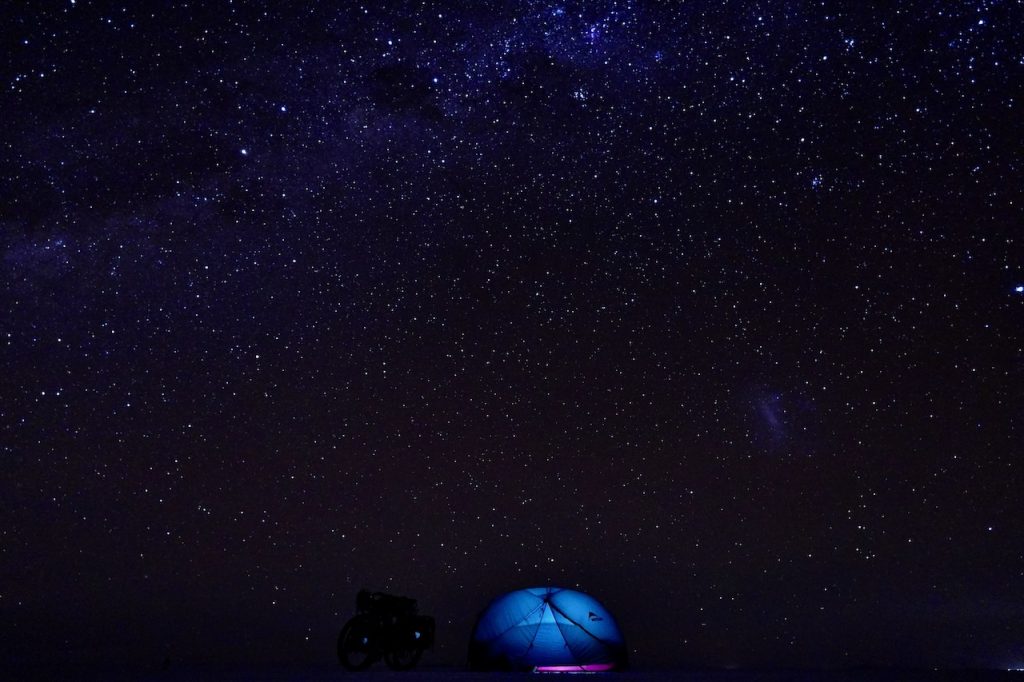
Our supply of water, toilet paper and food is seriously dwindling and so it is time to return to civilisation. The closer we get to the eastern edge of the Salar, the busier it becomes with tire tracks. Paul has discovered another path that can lead us from the salt flats back to the ‘main road’ and we decide to aim for that instead of the ‘main entrance’. we know that at the main entrance there is a layer of salt water about 30 cm deep. That and the crowds of jeeps and buses that we will find there do not make it very attractive. On our route we pass a salt hotel that has clearly seen better days. All windows are plastered with stickers from (mainly) motorcyclists who couldn’t resist leaving their trace. Nevertheless, it is special that this entire building is made of salt. The salt surface around it has been completely destroyed by cars. It’s the first time we’ve seen it like this. It’s a good thing we chose not to cycle to the island, then we would probably have had a much less scenic cycle. When we reach our ‘secret entrance’, wet feet are unavoidable there too. Fortunately, there is only a layer of about 5cm of water here and we can drive through it at walking pace. Such a salt flat is not good for your bicycle… but the saltwater spray will at least wash the thick, clumped salt crystals from the frame.

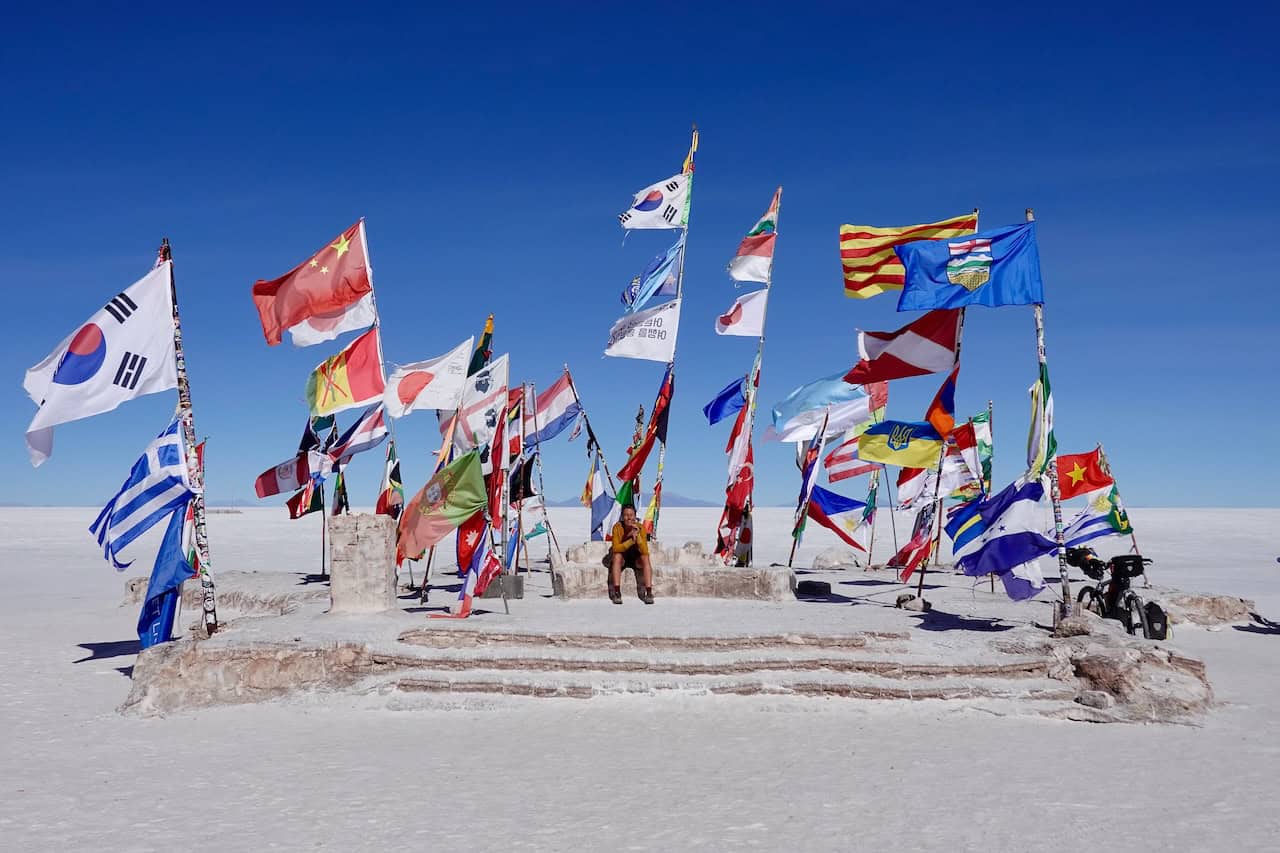
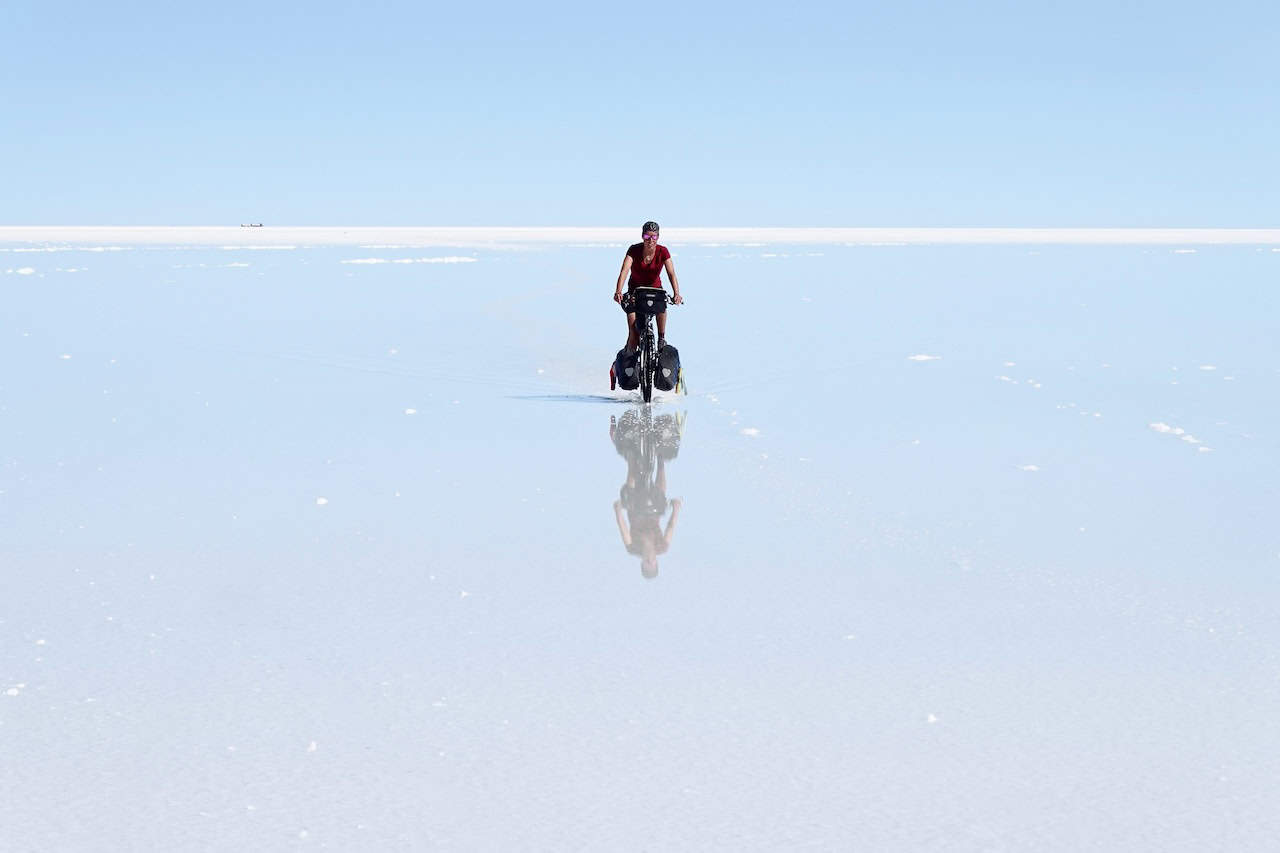
We leave the salt flats with an enormous feeling of satisfaction. As we eat our last chewy sandwiches in the shade of our bikes before we hit the asphalt again, we look at each other happily. How we enjoyed it! Three days on the salt flats, with nothing but the vastness, our bikes, Giraf and each other.
We cycle the remaining kilometers on the road to Uyuni while the tour jeeps pass us back and forth. Thanks to a tailwind we arrive in the city mid-afternoon. At a gas station we can use water, buckets and cloths to thoroughly clean our bicycles and bags. It is impossible to remove every bit of salt but we do what we can. In a hotel we each take a long hot shower for a fee. We already know the city of Uyuni, so we decide that same evening to take a bus to La Paz, the largest city in Bolivia.
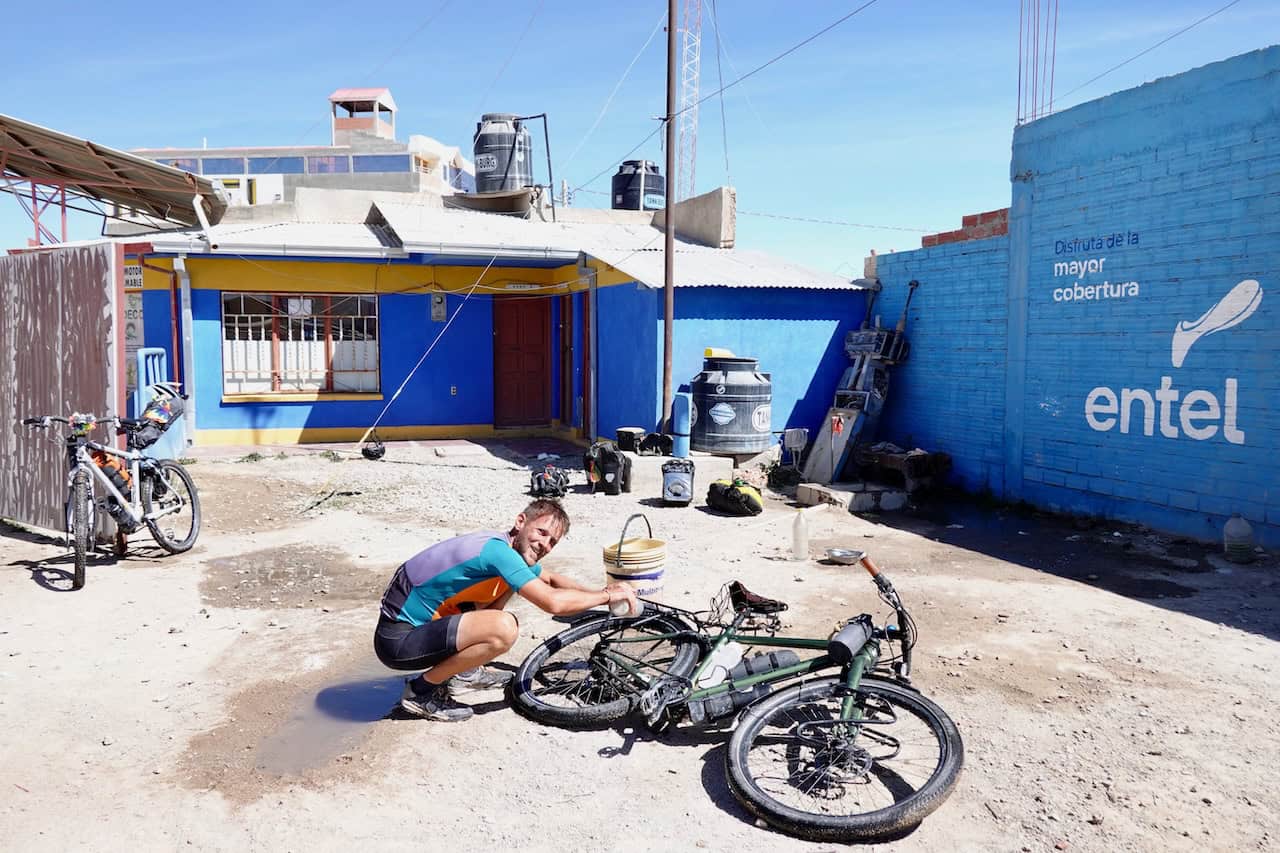
Despite (or because of) the fact that it was a series of buses and bicycles, we saw a large part of Bolivia. It’s time to head to the border, to Peru. With more than 3 months left on our travel calendar, this is probably the last country on our trip. And, the country I have been most looking forward to since the beginning of this trip. You can read in the next blog whether Peru will also manage to meet the high expectations I have of it and about our days in the impressive La Paz!
For now, warm regards.
See you in Peru!
Hera

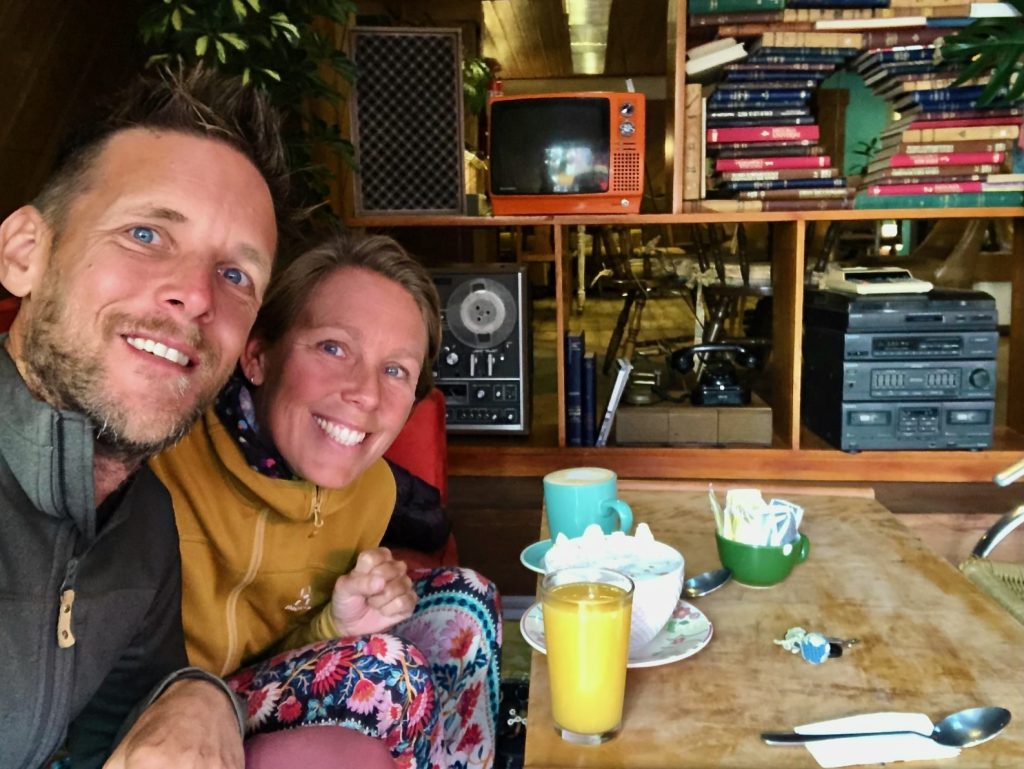

Mooi verhaal en foto’s weer! De link naar de NL versie van dit blog klopt niet, want die gaat over Chili, Torres del Paine. Leek me goed dat even te melden.
Fantastic story Hera. It’s what travel is all about. I’m jealous!
Inspiring!!